Intro
If this checklist was released prior to the season starting, pre-orders would have been through the roof. Headlined by Roki Sasaki and buoyed by short prints of three mildy to very surprising 2025 Opening Day debut rookies of Matt Shaw, Cam Smith, and Kristian Campbell, the assumption would have been that there was no way this product would not have been a huge hit. Underperformance, inconsistency, and injury have tamped down that exuberance, at least from my perspective. It does help that some of the Series 1 rookies will have autographs here such as James Wood and Dylan Crews.
As usual, lets dig into the players with True Rookie Cards in this edition of Topps Flagship.
Check out the 2025 Topps Series 2 TLDR Quick Reference Guide here.
Tier Ranks
Tier 1 - Cream of the crop. Combination of high-end Hit and Power tools that won’t end up as full-time designated hitters. Power/Speed combo players. Elite SP 1 pitchers (very rare). Potential for being perennial All-Stars and award winners.
Tier 2 - Bats that may lack in a certain area such as top-end power, three true outcomes players with huge power, great real life/fantasy players, but not hobby-elite, or tantalizing raw talents. High-end SP 2 pitchers with additional positive factors such as team, arsenal, pedigree, etc.
Tier 3 - May have some hobby interest due to a single factor such as prospect pedigree, team interest, general hobby hype, an interesting carrying tool, etc.
Tier None - The likelihood of widespread short-term hobby interest, and most likely long-term as well, is close to none. Plenty of pitchers, catchers, role players, hit-tool-only bats, Quad-A power bats, defense-first players, etc. to be found here. Hobby lottery tickets where the odds are stacked against you.
*Catchers and Pitchers are often knocked down a tier just due to their position.
Players that did not get a true rookie card (base) in 2025 Topps Series 1 but did have an autograph and/or insert are included in this article. They will be denoted with an asterisk (*).
Players that got both their true rookie card (base) and an autograph in 2025 Topps Series 1 and also have rookie cards (autos or inserts) in this release will not be updated. Most scenarios haven’t changed for the players who will show up with their second Flagship autograph - James Wood is still good, Dylan Crews is still good (despite the initial performance issues), and Ben Rice, despite hitting 12 home runs already, isn’t as good as Yankees fans would have you believe.
One final note is that the players with their true rookie card (base) in 2025 Topps Series 1 will have a their true rookie card base black parallel. That is likely going to be numbered out of 74. The black parallel is a popular one among collectors, and was not included in 2025 Topps Series 1 as Topps is in the progress of recalibrating the parallels. The collector’s voice was heard and Topps will be returning the base black parallels for Series 2, along with giving the Series 1 cards their black parallels in Series 2 packs, so set collectors and rainbow collectors can add the desired black parallel from the Series 1 checklist to their collections.

Arizona Diamondbacks
Tier 1
None
Tier 2
None
Tier 3
None
Tier None
None

Athletics
Tier 1
None
Tier 2
None
Tier 3
J.T. Ginn, 26, P
A sinker/slider pitcher looking to induce ground balls, Ginn debuted last year but was unable to make the A’s rotation out of Spring. A quick and dominant two starts in Triple-A led to a quick call-up led to Ginn holding his own before elbow inflammation sat him down for a few weeks. One rehab start, one MLB start, and back down to Triple-A at the moment, Ginn may be doing the Vegas to Sacramento back to Vegas thing until health or underperformance of the current rotation locks him into an MLB rotation spot. There’s a lot to be interested in as Ginn looks to have taken a step forward in his development. Even with the ground ball approach, he’s running really high K rates in Triple-A (37%) and the majors (27%), something we’ve never really seen from him. I wouldn’t call it a breakout, but I would call it going from a solid backend innings eater without much upside to a potential SP3 future. Team context and ballpark are negatives, as well as arm health concerns. But I’m intrigued enough to bump Ginn into Tier 3, even if I would recommend a cautious approach from a Hobby perspective.
Tier None
Brady Basso, 27, P*
2025 Topps Series 1 write-up:
Back-end starter that limits walks through strong command of his arsenal. Had decent strikeout rates in the minors, but doesn’t have enough velocity or quality of stuff to deliver those types of results at the MLB level.
2025 Topps Series 2 update:
I kept my thoughts brief in February because, well, a command over stuff profile that is giving up around as many fly balls as ground balls is usually not a profile worth diving into for the Hobby. A shoulder injury in March that first landed him on the 15-day IL and eventually led to a 60-day IL placement hasn’t made things any better. He’s supposedly working his way back and has thrown at least one bullpen, but has yet to register any official innings in 2025. We can continue to ignore Basso’s cards.
Grant Holman, 25, P
A current and future high leverage bullpen arm for the A’s, Nate Rasmussen has Holman as a Tier 2 setup pitcher for the Dynasty Closer Hierarchy. He’s primarily using a four-seamer and splitter approach while he throws a slider as his third pitch about 15% of the time. Holman has some of the best arm extension, which helps his stuff get on hitters faster and drive a lot of weak contact. In 2025, he’s given exactly zero barrels according to statcast, which is pretty darn impressive. At the MLB level, he’s getting a lot less strikeouts than he has in the minors even though he’s getting a relatively high whiff rate. That can be an indicator that at some point the K rate will regress positively. He is keeping the walk rates at a palatable level (8% in 22 innings in 2025) which mitigates the current lowered strikeout rate. Stuff+ likes the splitter, but that’s about it, and Statcast doesn’t have any positive run values for 2025. It’s all a bit of a mixed bag, and since he’s a reliever for a team that no longer supports a strong collector (or fan base - thanks John Fisher), we can move on from a Hobby perspective.

Atlanta Braves
Tier 1
None
Tier 2
None
Tier 3
None
Tier None
Grant Holmes, 28, P
Holmes is one of those backend starters/long relief arms that seems to know how to get the most out of his stuff. After being released by the A’s in 2022, the Braves grabbed Holmes for free and found a way to get his velocity up and increase the effectiveness of his secondaries. His four seamer is now around 94 with a slider, curveball, and a cutter to round out his arsenal. At his best, he’s succeeding through the ground-ball - in 2025, he’s hovering around a 50% ground ball rate, which is roughly in the 80th percentile for MLB pitchers. As long as he continues to do that, he likely sticks at the bottom of an MLB rotation, even if he doesn’t really have any standout pitches. A command and control, pitch to weak contact backend starter provides good depth from a real baseball perspective, but won’t drive much long term hobby interest.

Baltimore Orioles
Tier 1
None
Tier 2
None
Tier 3
Tomoyuki Sugano, 35, P
A long-time NPB pitcher of renown, Sugano finally landed in the MLB after his second attempt of going through the posting system. Originally posted after the 2020 MLB season, he did not come to terms on a deal and returned to his NPB team, the Yomiuri Giants. This time around, the Orioles made the move and picked up Sugano to a one year, $13M contract. At age 35, it’s not a huge surprise that Sugano was only able to secure a one year deal, even with his NPB credentials. Those are a three time MVP, two time Eiji Sawamura winner (similar to the Cy Young Award), and an eight time All-Star. That’s all to say, there is going to be a higher floor than normal for a 35 year-old rookie due to his international appeal in the card market. His profile on the other hand, especially at this stage of his career, is built on deception, limiting walks, and getting weak contact. He’s got a six pitch arsenal, none of which he throws more than 25% of the time or less than 10% of the time. He’s keeping hitters guessing, and he’s getting lucky. That may last in a small sample size, but if you believe it will long term, that’s the proverbial playing with fire. He’s currently running a .237 BABIP and xERA and xFIP’s over a run higher than his ERA as of writing. With a sub-14% K rate, there’s zero margin for error. If Sugano’s rookie cards had no international appeal, this is a Tier None, backend starting pitcher rookie card. With that track record and international appeal, it pushes him into Tier 3. With how bad the Orioles have been this season, and who knows what happens with Sugano in 2026 (does he head back to Japan, does he re-sign with the Orioles, or find another MLB team?), I would be selling any of his cards I ended up with.
Tier None
None

Boston Red Sox
Tier 1
None
Tier 2
Kristian Campbell, 22, 2B/OF
An unexpected inclusion on the Red Sox Opening Day roster, Campbell has had a meteoric rise through the minor leagues in 2024 leading to a consensus top 10 prospect across the industry in the pre-season, and finally signing a long term extension with Boston. Making the Opening Day roster put him on the radar for 2025 Topps Series 2 Short Print consideration, along with Matt Shaw and Cam Smith, which Topps happily took advantage of. As of writing I have yet to see what those odds will be, but I’d guess something like one short print per case. During Spring Training I was still skeptical because, while Campbell had shown enormous strides offensively in the minors, going from a contact only hitter with a funky swing to a contact + power hitter (still with a funky swing), his defensive skills were still a major concern. Boston has their fair share of players with defensive concerns, and it seems like they don’t mind it, I guess. Especially when you put up a first month like Campbell did, hitting .301 with 4 home runs and compiling a 152 wRC+. May was a completely different story as he hit .124 with 1 home run and had a -5 wRC+. The truth, more than likely, is somewhere in between. Offensively, Campbell probably settles into a .280 hitter with a high OBP and something like 20/20. With the home park bonus, he probably has more upside than that, but I wouldn’t plan for it. Defensively, well, we try to say that defense doesn’t matter for the Hobby. But in this case, it might. At this point, the Red Sox are trying to figure out how to shoe-horn Campbell in at first base after losing Casas for the year. If Campbell was a competent second baseman, I’d be pretty surprised that they would be going down that path. He’s currently sporting a -11 DRS and a -7 OAA ratings at second base - that is really bad and there’s no other way to put it. They’ve also tried to get him some outfield reps in the minors and the majors, which is a position they are loaded at already. Campbell is a positionless player for the moment, and is going to need a lot of work to change that. How much does that impact his ability to produce offensively for this season, and perhaps beyond, is anybody’s best guess. In the long term, it should be figured out one way or another and you just hope it doesn’t go the Vaughn Grissom route. There’s regular All-Star potential on a collectible team, but I’m not sure I see an elite superstar scenario, top 20 offensive player type that would make me comfortable putting him in Tier 1. He’s right on that border between Tier 1 and Tier 2, and if he was a plus defensively, and/or had continued to produce results in the last 6 weeks like he did the first month of the season, I might have been swayed to push him to Tier 1. I’m going to conservatively place him in Tier 2, realizing I am probably going to be a low ranker. If you can pick up his cards cheap, which I doubt, it’s worth the gamble. I’d probably be selling into the hype that comes with his first Flagship rookie cards, and the theoretical limited supply of a short print. And I’d be prepared to be really wrong about selling.
Tier 3
None
Tier None
Richard Fitts, 25, P
Acquired as part of the trade that sent Alex Verdugo to the Yankees in the off-season before the 2024 season, Fitts is a command pitcher living on the edge of the zone rather than a high strikeout guy. If you go on Baseball Savant for Richard Fitts and just hit random video 10 times, 8 of those videos are likely a pitch just inside or just outside the edge of the zone. That command allows him to limit the walks - outside of one small sample size, he’s never had a walk rate over 8% at any stop in his pro career. Living around the zone like that, and without premium stuff, can lead to high contact rates (78% in 2025) and against good hitters, that’s a problem. Against bad hitters, he gets a ton of chase, but it doesn’t translate to strikeouts as much as you’d think. He’s got a six pitch arsenal led by 95 mph four seamer. A slider, sweeper, curve, and sinker are all part of the regular pitch mix, while his change-up is rarely used. There isn’t much for me to get into with this profile from a Hobby perspective, but I imagine there will be some teenage boy meme potential for his cards if you use the typical phallic nickname for Richard and combine that with his last name. Never underestimate the Hobby’s propensity for teenage boy memes to drive a card's price just a bit higher than you’d expect. But it’s still nowhere near enough to overcome the Tier None profile.
Zach Penrod, 27, P
A high strikeout, high walk rate reliever that worked back from being an UDFA back in 2018 of the Rangers to being outright released when the Pandemic hit to sticking it out in Indy ball for a few years to getting signed by Boston and debuting in 2024. Penrod came to Spring Training and almost immediately went on what was eventually the 60-day IL due to elbow inflammation. Fortunately he was able to get back on the mound without undergoing surgery and is currently pitching in Triple-A. It does leave open the question that we always have to ask when a pitcher has elbow issues but does not get surgical repair, which is almost always a “when” and not an “if” about the need for future surgery. In the meantime, Penrod is on the 40-man roster, so if a bullpen spot opens up on the MLB roster, he’s a likely call-up. On the other hand, if Boston needs a 40-man spot and doesn’t have an obvious option for a 60-day IL move, Penrod easily could be back on the waiver wire. He is a lefty with a 95 mph heater, so he likely draws some interest, but until he can prove he can sustain a palatable walk rate, he’s not going to be doing much if any high leverage work. A good story, but not enough of one for Hobby relevancy given everything else about the profile.

Chicago Cubs
Tier 1
None
Tier 2
Kevin Alcántara, 22, OF*
2025 Topps Series 1 write-up:
High risk, high reward outfielder that is held back by his hit tool and inconsistent results, but is still just 22 years old. Had to be added to the 40 man roster, so the Cubs had him debut earlier than he really should have, which is why we get a rookie card here. There’s easy power in his lanky and athletic 6’6” physique, and enough speed that he should get into the double digit range. If the hit tool continues to trend positively as it did at times in 2024, there’s an everyday corner outfielder with 25 - 30 home runs, 15 stolen bases, and an acceptable batting average. The collectable team boost pushes him into Tier 2.
2025 Topps Series 2 update:
The Jaguar is giving us the full Jaguar experience in Triple-A in 2025. A power speed corner outfielder that has hit tool questions. Power - 7 home runs and a 90th Percentile exit velocity in the 97th percentile among all Triple-A hitters. Speed - 6 stolen bases. Hit tool questions - 32% strikeout rate. There’s some bright spots on the hit tool side - his zone contact rate is around average, his walk rate is in the double digits, etc. Ultimately I’m still of the same opinion I was previously - a palatable batting average with a 30/15 type of ceiling on a collectable team.
Matt Shaw, 23, 3B
A bat first prospect that was more expected than Kristian Campbell or Cam Smith to debut on their team’s Opening Day roster, Shaw had a really rough 18 game opening stint, leading to a reset back in Triple-A for just over a month. He’s come back in mid-May and in a super small sample, with a reduced leg kick, he’s hit .319 with 1 home run and 7 stolen bases. Defensively, he’s currently at third base, but I would prefer to see him at second base where his arm strength will be tested less. He is capable enough at third base to make it work until a better option presents itself to the Cubs, so I have less defensive worries with Shaw than say someone like Kristian Campbell. As Shaw continues to shore up the weaknesses with his swing, he can easily approach the .300 20/20 area. With a favorable home park, and his aggressiveness on the basepaths, that could be low, especially on the stolen base side of the equation. He’s not selling out for power, and makes a ton of contact all over the zone spraying the ball to all fields, rather than hunting the meatball like power over hit players. Without changes, that probably leaves less upside in his home run projection. Just like the other two short printed rookies, Shaw is on that borderline of Tier 1 and Tier 2. And just like the other two, I’m going to lean conservative here, and risk being dead wrong. There is an easy path to Tier 1 relevancy, with the collectible team, favorable park, and multiple potential All-Star games in the future. I’m just not sure I’m there yet, and want to see a much larger sample of success at the MLB level before I’m fully bought in. An elite, top 20 hitter is in the realm of possibilities, like it should be for most Tier 2 hitters. Shaw has an Altuve-ish offensive output potential that will sell like Tier 1 in peak seasons if everything breaks right. Of the three short print rookies, Shaw feels like the safest bet with the most all around talent.
Tier 3
None
Tier None
Jack Neely, 25, P
The bullpen arm the Cubs got in return for Mark Leiter Jr. at the 2024 trade deadline from the Yankees, Neely is a massive 6’8” middle reliever. He’s working with a simple two pitch arsenal - a four seamer at 96 mph and a slider at 87 mph. The slider is the whiff pitch, while the fastball gets whacked around the park. If Neely can develop the fastball into an effective pitch against MLB hitters, then there’s a high leverage future in the pen for Neely. If not, he is an up and down bullpen arm. Regardless, there isn’t anything for the Hobby to be interested in other than a collectable team and an impressive mustache.

Chicago White Sox
Tier 1
None
Tier 2
None
Tier 3
None
Tier None
Jairo Iriarte, 23, P
One of four players the Padres traded to the White Sox during the Spring of 2024 for Dylan Cease, I somehow missed that Iriarte debuted in the 2024 season for Chicago. He worked exclusively out of the pen at the MLB level, but he’s mostly been used as a starter in the minors. The hype was pretty high when Iriarte was in the Padres system, and this is starting to feel like a tale as old as time, so stop me if you’ve heard it before. Hyped Padres prospect is used as tradebait by AJ Preller to acquire a high-end major leaguer. And then some to all of those hyped prospects don’t live up to the hype. In Iriarte’s case, it looks like he’s added a fair bit of weight to his 6’4” frame - he doesn’t look hefty or anything, but he doesn’t look rail thin like I remember him a few years ago. All that is to say, I feel like his stuff used to be more electric, for lack of a better term. But that could easily be seeing a young, skinny kid throwing gas at 97+ and dreaming on his future even if his command was a glaring issue. As the future creeps towards the present, that command has not gotten better, and the fastball velocity is starting to drift down. If, but more likely, when the White Sox move Iriarte to the pen full time, we can hope his fastball velocity gets back into the upper 90’s. The change-up may be even less used if that happens, and he becomes a pure fastball/slider arm. The command issues are going to have to be addressed for him to go to a high leverage role, but you can squint and see it. However, when it comes to the Hobby, having to squint to see a high leverage reliever is not worth the effort. Keep your eyes wide open and spend your Hobby money elsewhere.
Jake Eder, 26, P
If you do end up with Jake Eder’s cards, I recommend reaching out to fellow Prospects Live staff member Drew Wheeler as Eder is a Tier 1 prospect in Drew’s heart, if not his head. One of the biggest risers in 2021 after being a fifth round pick of the Marlins in 2020, Eder blew out his elbow and had TJ surgery in August of 2021. As much as we like to believe that pitchers that have TJ procedures eventually return to their prior form, it’s not always the case and Eder is a prime example. Easily sitting mid-90’s with his four seamer prior to the surgery, he’s lost a few ticks and is down to 93. The Marlins traded Eder straight up for Jake Burger at the trade deadline in 2023 and that does not look great in hindsight, even with Burger scuffling this year. Eder was DFA’d towards the end of Spring Training this year as they made room on the 40-man roster for a trio of washed up veterans. The Angels acquired Eder for cash, and he’s bounced between the Triple-A rotation and the MLB bullpen for them this season. For a second division team like the Angels, it makes sense to see if Eder can cut it as a back-end starter, even with his reduced stuff. In the long run, Eder makes more sense in the bullpen throwing his one effective pitch, the slider/sweeper, as his primary option and using the fastball and change-up to keep hitters honest. At one time, Eder was a Tier 3 starter with Tier 2 upside. Now he’s a Tier None pitcher that reinforces the lesson of TINSTAAP. Pour one out for Drew.
Sean Burke, 25, P
In a small sample of 19 innings at the MLB level in 2024, Sean Burke produced some really impressive top line results. A 2-0 record with a 1.42 ERA and a 20% K-BB rate were all things to dream on. Sure, his ERA indicators were all 2 runs or so higher, but that K-BB rate would still play even with a low to mid three’s ERA. Reality has hit with the 2025 season and a larger sample size. His K-BB rate is down to 6% - primarily it’s the K rate that’s plummeted, going from 29% down to 17% while the walk rate has ticked up to 11%. The ERA has jumped up to a 4 as well with a bad record of 3-6 - those are more contextual than true talent, but it is something that the general fan, and thus to a certain degree, the Hobby, care about. He’s primarily featuring three pitches - a 94 mph four seamer, slider, and curveball. He’s also got a change-up and sinker, but he’s not throwing either more than 7% of the time. Stuff+ really isn’t a fan of his arsenal at the moment, and only the four seamer and curveball provide slightly positive run value from a statcast perspective. There’s a world where Burke recaptures some of that debut magic and elevates to an SP3-ish type of pitcher. That would dictate at least a Tier 3 ranking. For now, with a bad team, bad results, and his arsenal not showing much promise, it’s a Tier None ranking and spending money elsewhere until we see a material change.

Cincinnati Reds
Tier 1
None
Tier 2
None
Tier 3
None
Tier None
Julian Aguiar, 24, P
A back-end starter that debuted this past August and a month later his elbow was done. Aguiar ended up getting TJ in mid-October, and we won't be seeing him pitch again until 2026 more than likely. At his best, Aguiar is hoping to get weak contact and pitch around the fringes of the zone. He’s got a four pitch mix with his sinker doing the heavy lifting at over a 50% thrown rate. The rest all live in that 10% - 20% band - a slider, change-up, and curveball. None of his arsenal really sits above average, although Stuff+ really liked the slider in his 2024 MLB work. That’s probably because it’s got a lot of sweep to it, and Stuff+ is a big fan of sweepers even if they aren’t producing the best results, like in this situation. As Aguiar began facing more advanced hitting at the upper minor and MLB levels, his strikeout rate dropped down to the 20% range, which limits his upside. On the positive side, he does limit the free passes, almost never reaching the double digit walk rate range. There’s also a potential for a bullpen role for Aguiar in the future, or sort of that hybrid role of a long inning pen arm that can slot into starting when injuries crop up. A usable real baseball piece, but nothing we should be chasing in the Hobby.
Yosver Zulueta, 27, P
There was a moment where Zulu looked to be a really promising arm in the Blue Jays farm with big strikeout stuff. As usual with pitchers who end up in the pen like Zulu, the command and control just never got good enough to make a starting pitcher projection turn into reality. By the end of Spring Training in 2024, Toronto needed to open some 40 man roster spots for Brian Serven and Dan Vogelbach (LOL), so Zulueta was designated for assignment, at which point the Reds claimed him. Cincinnati continued the transition to the pen for Zulu and he’s bounced between Triple-A and the MLB bullpens for the Reds ever since. He’s primarily a sinker slider pitcher now with a change-up that he throws for a change of pace, but it’s a low usage pitch. There’s a decent amount of movement on both the sinker and the slider, but the results don’t really translate. As usual with young relievers, the walks are too high, and he’s never been under a 10% walk rate since his Single-A days. There may be a high leverage reliever here at some point in the future, but at the moment that seems pretty far off from where he is at present.

Cleveland Guardians
Tier 1
None
Tier 2
None
Tier 3
None
Tier None
Andrew Walters, 24, P
Walters is a future high leverage reliever with big time strikeout stuff but some walk issues. He’s got a two pitch mix of a 96 mph four seamer and a slider that is a work in progress. Both pitches get a ton of whiffs when he gets them anywhere close to the zone. Unfortunately his 2025 was cut short after just 12 innings in Triple-A and one and a third innings in the majors. A lat injury led to season ending surgery, which ended any short term interest we may have had in his cards. This is a reliever profile worth taking a risk on, but it has to be a healthy reliever, and that’s not the case, so we can move on.
Connor Gillispie, 27, P
A swingman type that can relieve as well as start, Gillispie debuted for the Guardians as a low leverage innings eater out of the pen. He was non-tendered after the season, ended being claimed by Atlanta, and then waived when they signed Jurickson Profar. Miami claimed him and he made the Opening Day roster as part of the rotation. After being beaten up by pretty much every team but the Mets in April, he went back down to Triple-A for May. He’s now back up and part of the Marlins bullpen to provide some length. He’s got a four pitch mix that’s all spread relatively equally between a sweeper, four-seamer, cutter, and change-up. The velocity is on the lower end as he sits at just 91 mph for his four-seamer which is not great, especially from the right side. There’s just nothing here for us to be interested in from a Hobby perspective as he isn’t even providing much value at a real baseball level.
Daniel Schneemann, 28, UTIL
A 33rd round draft pick in the 2018 draft by Cleveland, I’ll freely admit that Schneemann was completely off my radar until he debuted in 2024. Stop me if you’ve heard this before about a Cleveland prospect. A versatile defender that doesn’t have any standout tools but doesn’t have any glaring weaknesses that somehow can become a useful contributor at the MLB level. The Guardians seem to create these guys out of thin air, and Schneemann is giving them a 120 wRC+ so far in his second season in the big leagues. Credit to Cleveland, credit to Schneemann for beating the odds of a draft pick from a round that doesn’t exist any more. The most likely future outcome is that Schneemann continues to provide value as a strong-side platoon bat that fills in defensive gaps on a roster that seems to continually have them. Offensively he’ll provide league average to slightly above average value depending on the stat you focus on. The real baseball value is good, the Hobby value not so much.

Colorado Rockies
Tier 1
None
Tier 2
None
Tier 3
None
Tier None
Angel Chivilli, 22, P
A pitcher on the Rockies, and a reliever at that. Need I say more? Chivilli throws everything hard, which you’d think would be a good starting place. The fastball sits around 95-97, the change-up as his main secondary around 88, and the lesser used slider around 90 mph. The problem is that none of them show much effective movement. The fastball is the worst offender, with hitters batting over .320 on that pitch in 2025. All his pitches sort of live in the same movement zones, and you really just have to judge the speed of the pitch properly to square it up. Sure, pitching in Colorado likely inhibits true movement, and if he found himself in another home ballpark, he could be more effective and find more high leverage innings. As it stands today, he’s not able to fool MLB hitters like he was able to do with minor league hitters. There’s zero reason to be in on his cards for the Hobby.
Jaden Hill, 25, P
One of the biggest risk/reward picks in the 2021 MLB draft, Hill showed immense arm talent and even more arm health issues. He had TJ surgery in April of 2021, and we all wondered if the Rockies got a discount in the second round, or if they got a pitcher who would never be able to stay on the mound. If you’re the Rockies, you have to take those types of risks because they need as many arms as possible in their system. Surprisingly, Hill has been able to stay on the mound since he returned from TJ in 2022 and worked his way up to a 10 inning debut in 2024. The Rockies had him working purely as a starter in 2022 and 2023, but converted him to relief full time in 2024. There was some shoulder issues that cropped up in 2023 that did not require surgery, but I’m going to assume Colorado felt like the best way to keep Hill on the mound was to make that role switch. Being a former starter, he’s still using a four pitch mix - a sinker and a four seamer that both sit around 97 mph paired with a change-up and a sweepy slider. There’s a lot of strikeouts in the arsenal, and more than enough ground balls for a pitcher plying his trade in Colorado. What we really need to see from Hill are innings - in his fourth year in pro ball, we’ve yet to reach the 150 innings mark, and that’s with time spent starting games. As he gets more and more settled into the bullpen, there’s a shot he becomes a high leverage arm. I would not be surprised if he ends up closing games for the Rockies within the next two to three years. In general, I wouldn’t mind pushing a future closer into Tier 3, but the Colorado factor and the lack of a solid health track record keep Hill firmly in Tier None.
Luis Peralta, 24, P
A competent lefty reliever that the Rockies were able to acquire at the 2024 trade deadline for reliever Jalen Beeks. Peralta is primarily a two pitch guy with a 94 mph four seamer and a low 80’s curveball or slider depending on who you talk to. He’s also got a show me change-up that he will throw on occasion. Outside of Stuff+ liking the curve-ball/slider, nothing stands out, but up until 2025, he’s been relatively successful through all the levels. 2025, on the other hand, has been a lot more of a struggle, and he’s currently back in Triple-A fighting the PCL BABIP demons. I’m sure there’s more to say here, such as Luis is the younger brother to the Brewers starting pitcher Freddy, but this is a Rockies reliever that isn’t even in the majors at the moment. We can ignore Peralta’s cards and spend elsewhere.
Seth Halvorsen, 25, P
Did Topps look at the rookie options for the Rockies and the one guy on the staff who likes relievers say “It’s time!”. Four rookies from Colorado in the product, and all of them are relievers (oof). At present, Halvorsen is the best of them, operating in a high leverage role with a high octane arsenal and some command issues. A three pitch mix is highlighted by a four seamer that he regularly throws at 100 mph. His two secondaries are a splitter and a slider, both in the 90-91 mph range. All three pitches have plus potential, with the fastball getting the most swings and misses plus called strikes. Stuff+ loves all three pitches, while Location+ is not happy with Halvorsen’s command. The results have exhibited a pretty large difference between his 12 MLB innings in 2024 and his 24 innings (as of writing) in 2025, and not in a good way. A 28% K rate and an uncharacteristically great 4% walk rate led to a 1.46 ERA in 2024. In 2025, the K rate has plummeted to 20% while the walk rate is back up to what we’ve seen in the minors at 11%. The ERA is up to over 4 and the advanced indicators all point to that being relatively true to what it should be. If Halvorsen was the locked in closer rather than sharing the role AND the Rockies were getting more than a few save opportunities per month AND Halvorsen’s results were in line with his small sample size 2024 MLB numbers, I could make the case for Tier 3. But it’s Colorado, where you have to almost always knock the pitchers down a tier, and that’s what I’ll do here with Halvorsen.

Detroit Tigers
Tier 1
None
Tier 2
Jackson Jobe, 22, P*
2025 Topps Series 1 write-up:
It’s a shame that Jobe doesn’t have his true rookie card in this product because the overall rookie class in this product isn’t the best. Adding a potential SP1, future ace as more than just one insert and a couple of autos would have been the smart move to beef up the checklist. Other than needing to build up innings and perhaps some health question marks, it’s difficult to poke holes in Jobe’s potential. He has four plus or better pitches with plus control. Our own Ryan Epperson comped him to peak Gerrit Cole and as lofty as that seems, it almost seems like underselling Jobe (it’s not, but Cole did not have a very Cole-like season in 2024 which contributes to that feeling). If his autos are cheap, especially if he doesn’t make the opening day roster because the Tigers have enough veteran arms to open the year with, then it will be time to scoop them up.
2025 Topps Series 2 update:
This is why you should have put Jobe’s True Rookie Card in Series 1, Topps! While he’s not performed great, what I’m more talking about is that he’s now dealing with a flexor strain. Typically that’s a 4 to 6 week injury, but it’s also often a precursor to needing elbow surgery. Back in February, I was willing to buy low on Jobe cards. Now in June, with a potential TJ procedure looming, I’d be at best holding but more likely to sell. The talent is still there - all of his pitches are registering a Stuff+ of 100 or better. His command and control needs some work, with his Location+ at 96 as of writing. At the moment, Jobe is more of a thrower than a pitcher, and from the quotes I’ve seen, there likely has to be some level of maturing that takes place before he becomes the latter. If Jobe had lit the baseball world on fire leading into this arm issue, or even just not having any health issues, I’d have no qualms keeping him in Tier 1 where I had him in Series 1. With the injury plus the inconsistent results, I’m knocking him down into Tier 2 and shedding a tear.
Tier 3
None
Tier None
Keider Montero, 24, P*
2025 Topps Series 1 write-up:
I may be a bit irrational as I saw one of my head to head fantasy teams get crushed because Montero threw a complete game shutout against the Rockies in September. That alone deserves a Tier 3 ranking - not the shutout, but the crushing of my hopes and dreams. Montero has always struggled with high walk rates, but he seemed to figure that out at the MLB level in 2024, going from the double digit range all the way to sub-8%. However, what was normally a mid to high twenties strikeout rate dipped down under 19%. He likely traded some of that approach of getting whiffs to getting weak contact given the pitcher-friendly confines of Detroit’s home ballpark. That has me doubting the irrational Tier 3 ranking and considering him more as a back-end starter. Just like fellow rookie Jackson Jobe, Montero looks to be ticketed for Triple-A to start the year, and that will further suppress his card values. I’ll rank him in Tier None for now given those various bits of context, but there is a bit of that SP4 Tier 3 upside in the cards, especially if he is on the fantasy team of my head to head opponent.
2025 Topps Series 2 update:
Montero has bounced back and forth between the MLB and Triple-A rosters as the Tigers face injuries - Alex Cobb, Reese Olson, Jackson Jobe, etc. He’s pitching to weak contact, and the strikeout and walk rates are headed in the wrong direction. The K rate is now under 15% while the walk rate is headed towards 10%. That may work on the fringes of a rotation in a pitcher’s park like Detroit, but it’s not an arm that you’d want in your rotation. It’s an arm the Tigers are forced to have in their rotation for the moment. No change from my previous ranking and I’m more pessimistic as that SP4 Tier 3 upside seems less likely by the game (except when he faces the Rockies).
Ty Madden, 24, P
Madden mostly pitched out of middle relief or the follower role at the end of 2024 in Detroit, but it was going to be difficult for him to make a stacked Tigers rotation out of Spring Training. While injuries have changed that story a bit, the injury bug also hit Madden as he went down with a rotator cuff strain in March and is currently on the 60-day IL. He’s got a full starter’s arsenal, led by a four seam fastball around 94 mph. The main secondaries are a slider, cutter, and splitter, with a curveball and a sinker as less thrown options. The fastball being thrown more than 40% of the time and not really effective at getting swing and miss against advanced hitters limits Madden’s upside. The splitter and slider both show promise as whiff pitches, but unless the pitch mix changes or the fastball takes a step forward, Madden will hover in the back-end starter/long reliever role. We can ignore him for the Hobby until we see effective changes.

Houston Astros
Tier 1
None
Tier 2
Cam Smith, 22, OF
Acquired by the Astros in a bit of a shocking move this off-season as part of the return for one of the best and consistently not-talked about Kyle Tucker, Smith was the Cubs 1st round pick in the 2024 MLB Draft and by the beginning of the 2025 season, was on Houston’s Opening Day roster. I think if anyone had either of those scenarios - Smith being part of a trade for Kyle Tucker and Smith making an MLB Opening Day roster in 2025 - they should be guessing lottery numbers. I did a deep dive on Smith for 2024 Bowman Draft and came away impressed, even if I had some minor concerns. Those concerns were two-fold - defensively, I didn’t think he was going to be more than adequate at third base. The arm was more than plenty to play at the hot corner, but the instincts for the position didn’t seem as natural as I thought they could be for someone as athletic as Smith. My second concern was in the box - while the power was evident, he looked just a bit stiff. I didn’t see him handling advanced breakers well, especially breaking down and away from him. Those two concerns kept me from pushing Smith all the way up to Tier 1 in Bowman Draft. Fast forward to now and the Astros solved one of those two problems by sending Smith to right field full time. I like that move a lot because Smith’s arm will be an asset out there, and his athleticism will play better and better as he learns the position. Indeed, just over two months into the season Smith has a 7 DRS and a 4 OAA rating. That’s impressive and cements this as a permanent move in my opinion. Offensively, my concerns have not been alleviated. He’s hitting .103 against sliders, .125 against curveballs, and .200 against sweepers. His top line results are perfectly average, hitting .246 with 3 home runs, 3 stolen bases, and a 100 wRC+. The strikeout and whiff rates are higher than I want to see them, both just over 29%. The power potential is there as his bat speed is in the 91st percentile, so there is something to hang your hat on power-wise. Offensively, Smith is still a work in progress, and I’m comfortable keeping him in Tier 2 until we see if he can take the next step. The Ceiling is pretty big as a power-speed monster that will be hitting taters into the Crawford Boxes for the next 5 years at a minimum. He should be able to hit 30 home runs with 40 not out of the question if he does take that next step - it’s quite a big step though. I’m definitely willing to bargain hunt Smith’s cards - I just doubt we see many bargains until his rookie card supply gets quite a bit higher than they will be on Series 2 release day.
Tier 3
None
Tier None
None

Kansas City Royals
Tier 1
None
Tier 2
None
Tier 3
None
Tier None
None

Los Angeles Angels
Tier 1
None
Tier 2
None
Tier 3
Caden Dana, 21, P*
2025 Topps Series 1 write-up:
Do the Angels really hate their minor leagues? Judging by the money they invest in them, or not invest in them, the answer is yes. I ask this question here because they pushed Caden Dana at just 20 years old all the way to the Majors last year. Now, having him skip Triple-A isn’t as crazy as it seems on the surface, as you don’t really need to subject your prized pitching prospects to the PCL. But they could just as easily have kept him in Double-A in September or shut him down early rather than having him get his face smashed in by MLB hitters. Dana has SP3 upside, which could push him into Tier 2 consideration, but he’s got just a bit more work to do before I would fully buy into it. Taking a third pitch to above average or plus would help a lot - at the moment he is a two pitch guy (fastball/slider) with various other offerings that need to take the next step. This arsenal concern and the Angels doing whatever the Angels are doing caps him for the moment in Tier 3 even with the tantalizing upside.
2025 Topps Series 2 update:
The Angels have Dana pitching in Triple-A because they are a poorly run organization? I guess you could argue he has nothing left to prove in Double-A, and he’s going to the PCL school of hard knocks. To say he’s getting knocked around would be an understatement. Not to mention he’s had two MLB appearances in 2025, strangely in mop-up duty, and those weren’t great either. I don’t get it. I was hoping to be able to push Dana into Tier 2 with this revisit, but it’s not great, Bob. There’s some people that will be completely out on Dana, and I can’t fault them if they are purely looking at his 2025 results. He’s still just 21, and even if I don’t believe in the org, I still believe in the talent, enough to keep him in Tier 3.
Tier None
Bryce Teodosio, 23, OF
An undrafted free agent signed by the Angels in 2021, they had to get hitters into their org somehow when they chose a pitcher in EVERY single round of that draft. Teodosio has never really made it onto prospect radars - he’s mostly just an org depth outfielder, but props to him and the Angels on getting at least an MLB debut out of an UDFA. He’s primarily a speed and defense center fielder that has popped decent minor league stats at times due to hitter friendly environments. He’s swinging a lot in those environments (80th percentile swing rate in 2024 at Triple-A), and who can blame him when pitchers aren’t able to take advantage of their stuff. That leads to high contact rates, but he doesn’t have the type of talent that can get away with that at the MLB level. If you like beating out infield ground balls and making the occasional highlight reel catch, then Teodosio should be on your radar. But he’s currently on the minor league IL with an undisclosed injury as of mid-April, which further tamps down the almost zero interest we should have in his cards.
Gustavo Campero, 27, OF
An org depth outfielder on the shorter side at 5’6” that won’t hurt you if you need some short-term corner outfield replacement innings. He’s got decent speed, takes enough walks, and doesn’t strike out much, regularly putting up K rates well under 20%. The groundball rate is more than you’d like to see, and that hurts the average power, but he’s not a zero in the home run department. Currently on the IL due to ankle inflammation as of writing, I expect that there will be a 40 man roster crunch consideration when he is ready to return. That could easily push him into DFA territory, and perhaps finding himself in a different uniform. More likely is that he goes unclaimed and ends up back in Triple-A and off the 40 man roster. And that’s how I’d value him for the Hobby - not worth a claim in real baseball, and not of any monetary claims in the Hobby.
Samuel Aldegheri, 23, P*
2024 Topps Series 1 write-up:
Part of the return the Angels got from the Phillies at the 2024 trade deadline for Carlos Estevez, Aldegheri is a low velocity, pitchability lefty that should find an innings eater role at the back of a rotation for a second division team like the Angels. He is the first Italian born and raised pitcher in MLB history, so there is some small bit of International juice here, but I can’t imagine that drives a noticeable amount of money into his cards.
2025 Topps Series 2 update:
Not much difference in 2025 other than his numbers are even less inspiring. His K rate is lower, his walk rate is higher, his ground ball rate is down and his fly ball rate is up in comparison to his 2024 Double-A stats. A Tier None pitcher in Series 1 remains a Tier None pitcher in Series 2.

Los Angeles Dodgers
Tier 1
None
Tier 2
Roki Sasaki, 23, P
The biggest International Free Agent signing this past off-season, Sasaki has some of the best raw pitching talent, but as we’ve seen from the results so far, he’s far from a finished product. The extension on his pitches is in the 93rd percentile, and his splitter has the potential to be elite. The four seam fastball, on the other hand, has good velo at 96 mph for an MLB pitcher, but he was in triple digits at the height of the mania a few seasons ago. In addition, at least as it was measured in his MLB outings, the fastball had bad characteristics. A 9th percentile spin rate is not good, and I regularly hear Eno Sarris giving it the dreaded dead zone label. Stuff+ has it at a 78, so models are not a fan of it either. His third pitch is an 82 mph slider which the models also don’t like, grading out at 90 with Stuff+. The obvious first place for adjustment that you’ll see mentioned everywhere is a second fastball - a sinker or a cutter. That would help to lessen the reliance on the bad four seamer. It’s tough to add a new pitch in-season, but Sasaki could take advantage of his impending rehab work to do so. And that leads into the second topic of discussion - Sasaki already had some medical questions with a shoulder issue last season in the NPB (along with an oblique issue). A shoulder impingement has led to a month on the shelf so far - seeing this same problem in back to back seasons is slightly worrying. Having one elite pitch (splitter), one so-so pitch (slider), and one bad pitch (fastball) plus back to back seasons of shoulder issues has me knocking Sasaki down a Tier, and I will be the first to admit I did not see that coming heading into this season. Roki, along with the three short print rookies, were the hardest rookies for me to rank by far. As much as I think Roki has Tier 1 talent, it’s hard to argue with the results and context surrounding the current profile.
Tier 3
Edgardo Henriquez, 22, P
Stop me if you’ve heard this before - a Dodgers pitcher that’s injured. Except, somehow, this isn’t an arm injury! On the other hand, an off-field mishap leading to a foot fracture isn’t the greatest reason for an injury either. But that should mean that when he’s fully ramped back up, which should be sometime over the next few weeks, we can assume there’s no arm concerns to be wary of. Henriquez is a two pitch, future high leverage reliever if he can figure out where his pitches are going. He’s got a high-90’s four seamer and a high-80’s cutter, and they are a nasty combination. Velocity, swing and miss, strikeouts, weak contact - you name it, he’s got it. Except for that pesky walk problem. His walk rates through the minors regularly were in the low to mid teens - not great, Bob. Just short of 23 years old, Henriquez still has plenty of time to figure out the command. When he does, and assuming he doesn’t have any more off-field mishaps, you could be looking at the next generational Dodgers closer. If there’s a rookie reliever I’m speculating on, it’s Henriquez, and that’s enough for me to get him into Tier 3. That obviously goes with the extreme risk that relievers pose for the Hobby - speculating on his cards will not be for the faint of heart - not from a buy-in perspective, but from the lowest of odds of making a significant jump in price because "reliever".
Hyeseong Kim, 26, 2B/OF
Entering Spring Training, the decks seemed clear for Hyeseong Kim to take over the second base job for the Dodgers after they traded Gavin Lux to the Reds for Mike Sirota and a Comp-A pick in the upcoming draft. Seriously, why does anyone trade with the Dodgers. Anyways, Kim was a speed and hit middle infielder that Los Angeles signed from the KBO in the off-season as an International Free Agent. However, he did not look ready offensively during Spring Training, and ended up spending all of March, April and the beginning of May in Triple-A before being called up for his MLB debut on May 3rd. He’s been on a BABIP and Ohtani-fueled heater ever since he came up. As of writing, his BABIP is sitting at .511, and he primarily hits in the 9th spot in the batting order, right in front of Shohei Ohtani who always hits at the top of the order. Pitchers are not going to want to put Kim on base ahead of Ohtani, so Kim gets plenty of pitches he can hit. That BABIP and lineup protection is driving his .410 batting average and 193 wRC+. His speed and his ability to put the bat on the ball help, but those numbers are nowhere near sustainable. His batting average should continue to be a plus, and he is fast and ready to steal bases at any opportunity with 6 in just 27 games. He’s also being platooned a fair bit, which caps his Ceiling. An additional positive from the Hobby perspective is that International appeal as well as team collectibility. I wouldn’t be shocked if there are times when his cards are selling like other cards in Tier 2. I wouldn’t put him at that level, as I don’t think there’s much All-Star upside here. He’s a really good strong side platoon up the middle defender that I have no qualms ranking as a Tier 3 player due to the added context, and would be happy to buy on the cheap, but wouldn’t spend big because the upside is likely limited.
Tier None
Ben Casparius, 26, P
Outside of one blow-up against the Cubs this season, Casparius has pitched really well out of the bullpen in a multi-inning reliever role for the Dodgers this season. Primarily a starter coming into 2025, I can see Casparius ending back up in that role at some point. On the other hand, he’s always shown strong strikeout rates, but he’s never had a walk rate under double digits until this season. That speaks to Casparius proving most effective as a bulk innings, swingman type that can provide depth to an always injured Dodgers pitching staff. It’s a conundrum on what the Dodgers will do moving forward with Casparius, because his stuff looks so good in relief but their rotation is held together by spit and bubble gum. For now, I’m going to stick Casparius in Tier None because of the relief role, and that it’s not a closer role. If he gets into the rotation with any frequency AND maintains the stuff and walk rates he’s shown so far in 2025, then a bump to Tier 3 is warranted. I wouldn’t be spending Hobby dollars here, but if I did end up with his cards, I’d consider holding and seeing what the Dodgers do here.

Miami Marlins
Tier 1
Tier 2
Tier 3
None
Tier None
Griffin Conine, 27, OF
There was a moment back in 2018 or so when we had at least four legacy players in the Blue Jays system with varying degrees of excitement - Vlad Jr., Bo Bichette, Cavan Biggio, and Griffin Conine. Unless Bichette is extended/re-signed in this final year of his rookie contract, Toronto will end up with just Vlad Jr. of this legacy four-some. Which, honestly, isn’t a terrible result, keeping the best player of the bunch. Back to Griffin - he was traded to his father’s most notable team, the Marlins, for Jonathan Villar back at the 2020 deadline. Griffin was essentially viewed as a power over hit prospect, and those tools were considered pretty far apart. He rarely sniffed a strikeout rate under 30%, but could put up big home run totals, including 36 combined between High-A and Double-A in 2021. With 50 games now into his MLB career, I was expecting a bit more than four home runs. His 30 games in 2024 was what we’ve seen before - a 32% K rate, but 20 games into 2025, that dropped to just 27%. It seems small, and it is a small sample, but that’s a lot more palatable for a power hitter - that 5% difference can sometimes be the difference between an everyday player and a bench bat or Quad-A player. Unfortunately, Conine’s 2025 season is already over, as he dislocated his shoulder in April which resulted in shoulder surgery. I tend to believe that Conine is what we thought he was, what he has shown throughout his career, and that is not an everyday player. I still don’t believe the hit tool is good enough - there’s just too much whiff, even in his more successful 2025 approach. There may be some hot streaks to take advantage of and sell any cards you have of his, but that opportunity was back in April, and we won’t see another one until at least next April. I’m definitely not buying.
Javier Sanoja, 22, UTIL
Sanoja has played every position on the diamond in 2025 with the exception of catcher. That’s including pitcher, as he’s logged five innings so far in blowout games. Some are saying “Ohtani who?” when discussing Javier Sanoja. And by some, I mean none. Sanoja is a smaller stature (5’7”, 150) speed and defense guy who excels at putting the bat to the ball. He won't whiff, but he also won’t make a ton of impactful contact. He’s never put up double digit home runs in a season since he joined the pro ranks in 2021. If the BABIP gods are in his favor at any point for an extended period of time, he could flirt with a .300 season and 20 stolen bases, and that’s a Tier 3 type of Hobby player, but I just don’t see that as being a regular outcome. He’s more like a .260 hitter because he’s just never hitting the ball hard and while he’s fast, he’s not a speed demon. As we like to say, he’s got plus speed, but he’s nowhere near elite. This is one of the classic utility type archetypes, and on a second division team like the Marlins, he’s getting everyday reps. On a good team, he’s on the end of the bench or annoying Triple-A pitchers with his low swing/high contact rates. We can spend Hobby dollars elsewhere.
Valente Bellozo, 25, P*
2025 Topps Series 1 write-up:
Acquired just after the 2024 season began from the Houston Astros for Jacob Amaya, Bellozo is a back-end starter for a second division team in a pitcher friendly park. He’s not getting much swing and miss with his sub-90 mph offerings. A sub-15% strikeout rate at the MLB level in his debut are not what Hobby dreams are made of. I’m not sure how he was able to turn in almost 70 MLB innings of 3.67 ERA work other than limiting walks and letting hitters get themselves out through high fly ball rates in a home-run suppressing stadium. We can easily ignore his cards.
2025 Topps Series 2 update:
After starting the year in Triple-A, Bellozo came up and made a few starts before shifting to a long relief around mid-May. As I said in February, there’s nothing to be interested in from a Hobby perspective. The stuff average to fringe and he gives up way too much fly ball contact to survive on an MLB roster outside of second division teams in pitcher friendly parks. Unsurprisingly, Miami ticks both of those boxes.

Milwaukee Brewers
Tier 1
None
Tier 2
None
Tier 3
None
Tier None
Isaac Collins, 27, OF
Sort of like a glue guy, Collins doesn’t have any above average tools, which cap his upside. But he’s a nice bench piece that can be a fourth/fifth outfielder type that can steal some bases, hit an occasional home run, and most importantly, won’t get himself out. He’s walking at an almost 14% rate, doesn’t chase bad pitches, keeps the ball off the ground enough, and sprays it all over the field. A nice to have real baseball player without many holes in his game but won’t provide any real Hobby value.

Minnesota Twins
Tier 1
None
Tier 2
None
Tier 3
None
Tier None
DaShawn Keirsey Jr., 28, OF
Keirsey is that speedy, athletic fourth/fifth outfielder archetype that real baseball teams like to have sitting in Triple-A as an injury replacement when needed. And let’s face it, the Twins regularly are in need of injury replacements. Keirsey’s debut came last September as an injury replacement for a Max Kepler knee issue. He did end up making the 2025 Opening Day roster, but the results through the first two months of the season were really poor. He was hitting .109 with one homerun, five stolen bases, a K rate over 30%, a walk rate under 2%, and a wRC+ of -24. There’s always an argument for letting young hitters work through their struggles against MLB pitching, but in a scenario where it’s this bad, you have to let the player reset at Triple-A. They finally sent him down at the end of May, and we’ll have to see if he gets called on again any time soon because the Twins have a few different outfield options and player types down in Triple-A. Keirsey’s not a nothing in the power department and his hit tool often plays up with his speed and BABIP in his favor. There’s some future scenario where he’s a fringe everyday player in the next few years, but at 28 years old already, I think that ship is starting to sail away.

New York Mets
Tier 1
None
Tier 2
None
Tier 3
LuisAngel Acuña, 23, 2B*
2025 Topps Series 1 write-up:
I’ve pretty much always been on the sell-side of Acuña, whether that's with his cards or in fantasy baseball. Too many people see the last name and assume there’s plus power in his future, when he’s nothing really like his older brother, Ronald Jr. In reality, he’s a contact over power type of hitter that wants to run wild with his plus speed. He can play anywhere that’s needed with a strong arm and a good glove. He spent the majority of 2024 at Triple-A which was a mixed bag overall - lots of contact and an aggressive approach that led to his walk rate being cut in half and seeing his batting average drop under .260 and his OBP dropping under .300. However, he ended 2024 on a high note at the MLB level, and that hype with a Mets collector base backing him up, could see Tier 2 player price points because of that small sample size success. I’d be happy to take the money if/when there is hype, as I see him as more of a volatile Tier 3 type of player.
2025 Topps Series 2 update:
The results have been about what I expected, and if you sold his cards like I recommended, good on you. In 2025, with fairly regular playing time, Acuña has put up a 71 wRC+, hitting .246/.298/.292 with 11 stolen bases and zero home runs. Outside of his speed and defense, there hasn’t been much to be positive about in 2025. I’d continue to sell in the short term. In the long term, as long as the Mets are patient, there’s still a decent chance Acuña is the everyday starter at second base, setting the table at the top of the lineup. I don’t see that happening immediately, especially as the Mets are fighting to stay atop the NL East and can’t afford to be patient. But his name value plus collectable team and future potential are enough to keep him where I had him in Series 1, which is in Tier 3.
Tier None
None

New York Yankees
Tier 1
None
Tier 2
None
Tier 3
None
Tier None
Duke Ellis, 27, OF
Now on his fourth org in the last 12 months, Ellis is a speed only outfielder who has yet to show he can hit advanced pitching in the upper minors or in his small sample size MLB opportunity in 2024. He’s never hit above .212 since he’s reached Triple-A, but he stole 57 bases combined across levels in 2022 and did the exact same thing 2024. He had an injury at some point in mid-April while in Triple-A, but I have yet to find anything concrete on what it was. As of writing, he’s played two rehab games at the Complex, and I assume he’ll be headed back to Triple-A soon. Ellis is at best org depth, and can provide bench speed and late inning outfield defensive replacement value, especially when rosters expand in September. About the only way I can see Ellis’ cards having value is if he does something in the playoffs for the Yankees - like an extra inning ghost runner that scores a series clinching victory or something. But until that most unlikely of circumstances happen, we can ignore his cards.

Philadelphia Phillies
Tier 1
None
Tier 2
None
Tier 3
None
Tier None
Michael Mercado, 26, P*
2025 Topps Series 1 write-up:
Effortless delivery with strikeout stuff if he could command it. He hasn’t had a walk rate under 12% over the last two years, which has mostly been work out of the bullpen. If he does end up figuring out the command, this could be a future high leverage reliever. Until then, he’s someone we can safely ignore for the Hobby.
2025 Topps Series 2 update:
Mercado has surprisingly knocked the walk rate down to 9% so far in 2025, but it’s also come with a sub-25% strikeout rate. That tamps down some of the high leverage excitement that existed prior to his 2024 and now 2025 stints in Triple-A. There’s definitely more to come from Mercado - what does his final form look like is anyone’s best guess, but fortunately for the Hobby, we can safely ignore most relievers, like Mercado, at least in the short term.
Seth Johnson, 26, P
Most rookies have friends and family in attendance for their debut - I sort of hope that Seth didn’t. He pitched in one game, starting for the Phillies in September against the Marlins in Miami and the results were not great, Bob. He lasted just over two innings, gave up 8 hits and 9 earned runs en route to the Phillies losing 10-1. After that shellacking, he was sent back to Triple-A. After his first four starts in Triple-A in 2025, the Phillies decided they had seen enough and moved him to the pen, where he’s been pitching ever since. With some promising strikeout stuff, but significant walk issues, it makes sense that it’s time to give up the starting dream and try and make the middle reliever reality happen sooner rather than later. That’s the right call from a baseball perspective, but knocks his Ceiling down even further from a Hobby perspective.

Pittsburgh Pirates
Tier 1
None
Tier 2
None
Tier 3
Nick Yorke, 23, 2B/OF*
2025 Topps Series 1 write-up:
After being a shocking first round pick of the Red Sox in the 2020 MLB Draft, Yorke came out hitting like he had something to prove. He shot up prospect lists and was suddenly a top 100 prospect, and then 2022 and 2023 things sort of got more difficult and Yorke fell out of favor. The promised plus hit tool with surprising pop was being negated by too much swing and miss. In 2024, he seemed to have made noticeable improvements in those areas and Boston appears to have decided to cash those chips in, trading him to the Pirates for prospect pitcher Quinn Priester. Yorke is going to have to hit his way to relevance at the big league level - his power is average at this point, and PNC park is going to make it pretty difficult for him to get more than 10-15 home runs with full playing time. He steals a surprising amount of bases for someone with just average speed although I don’t think this will be a big feature of his game moving forward. Defensively, he’s not great really anywhere, so he’s going to have to continue to be hidden at second base or a corner outfield spot. This is a borderline Tier 3 and Tier None profile with the first round draft pick and at one time top prospect pedigree making me think there might be some Tier 3 price points out of the gate. If so, I’d look to cash in as much as possible as quick as possible, just like the Red Sox did.
2025 Topps Series 2 update:
Yorke has been stuck in Triple-A for all of 2025 and he’s doing Nick Yorke things. Stealing more bases than you’d expect, not hitting for enough power, and hitting for a decent average. This is probably the last hurrah for his cards unless he gets back to the majors with a full time role and can consistently produce a .300+ batting average. I’ll keep him in Tier 3, but he’s about as close to Tier None as a hitter can get.
Tier None
Billy Cook, 26, 1B/OF*
2025 Topps Series 1 write-up:
Cook took promising steps in 2024 after being traded to the Pirates from the Orioles in July to show that he should get a few MLB looks, especially when the Pirates don’t sign any free agents of significance ever. He has some power and some speed, and his walk rates got into the double digit range for the first time in his career. The hit tool/contact rates are the main concern, as they are average to below average. And that holds him back from being considered for Tier 3 as the top line results in Triple-A (.275, 17 home runs, 25 steals) made me second guess my Tier None initial ranking. There could be some playing time here on a weak offensive team in Pittsburgh, but he’s probably more of a bench bat/utility player type in the long run.
2025 Topps Series 2 update:
Cook did not make the Pirates roster out of Spring Training and he’s been stuck in Triple-A all of 2025. The double-digit walk rates are still there. He’s still stealing bases. But the power has completely evaporated (zero home runs) and the hit tool metrics are below average (o-swing% 41st percentile) or just bad (z-contact% 16th percentile, whiff% 27th percentile). The second-guessing myself back in February appears to not have been needed. Unless something changes, there’s no reason to spend your Hobby cash here.
Mike Burrows, 25, P
A back-end rotation pitcher that will find it hard to step out of the shadows of the stable of more highly touted young pitchers in the Pirates organization. Burrows doesn’t blow anyone out of the water, especially at the MLB level, but he’s a competent pitcher that succeeds by keeping the walks to a minimum and mixing his fastball and change-up combo to keep hitters off-balance. He’ll also throw a slider and curve-ball a decent amount of time to keep hitters off of his bread and butter fastball/change-up combo. The change-up is the whiff pitch, while everything else is sort of just fine. Stuff+ likes the change-up the most as well, and the four seamer is well below average. Statcast also has the 94 mph fastball as his worst pitch with a -4 run value through his first 3 starts of 2025 at the MLB level. There’s potentially another step into a mid-rotation SP for Burrows, and the easiest way to get there would be to turn the fastball into a more effective pitch. He also may be a trade candidate at some point, and if he ends up with a team like the Yankees, the Hobby would jump all over him. Until then, we can safely ignore Burrows for the Hobby.

San Diego Padres
Tier 1
None
Tier 2
None
Tier 3
None
Tier None
Brandon Lockridge, 28, OF
Acquired at the 2024 trade deadline for reliever Enyel De Los Santos and Thomas Balboni Jr. from the Yankees, Lockridge is currently a bench outfielder/defensive replacement/short-side platoon bat/speed option for the Padres. Regularly someone that put up double digit walk rates the past few years and kept the strikeout rate under 25%, Lockridge has not turned in that same patience in 2025. The K rate is still under 25%, but the walk rate is under 5%. At 28 years old, he’s a fringe roster guy, and if he can’t recapture that aspect of his game, especially since his lower level home run power has likewise evaporated, he’s going to find it tough to hold an MLB job. Looking at his spray chart is further evidence of the lack of impact as Lockridge is struggling to hit the ball anywhere close to the warning track. There’s still time to change that speed/defense short-side platoon profile, but the clock is ticking, and I don’t see a need to be interested from a Hobby lens.

San Francisco Giants
Tier 1
None
Tier 2
None
Tier 3
Hayden Birdsong, 23, P
2025 Topps Series 1 write-up:
Birdsong showed flashes in his debut that he could be a mid-rotation piece for the Giants at some point in the future. All three of his secondaries produced good to great results, with his slider being an absolute monster. More than anything, his fastball and his command let him down. The fastball just didn’t get enough swinging or called strikes for a pitch he throws almost half the time. Add in an almost 14% walk rate and that’s not a recipe for success for a starting pitcher. Bullpen risk will be ever present until Birdsong gets those two issues corrected. If he does, he’s got SP3 potential and perhaps better with a great home park to pitch in. If he doesn’t, he’s ticketed for the bullpen and I’ve got him ranked too high.
2025 Topps Series 2 update:
Birdsong lost the Spring Training rotation battle to Landon Roupp and ended up going to the MLB bullpen, where he shined to start the season. That’s not great for the Hobby, but with injuries and underperformance in the Giants rotation, Birdsong has made three consecutive starts as of writing, and they’ve all produced good results. He’s limited the walks and gotten at least roughly a strikeout per inning over those three starts. My concern remains though - his fastball in those three starts were just average by Stuff+ metrics. There’s still an SP3 potential on the strength of his secondaries if he can manage his fastball. If he can turn his fastball into a consistently effective pitch, then he is a locked in SP3. I’ll keep him ranked in Tier 3 with the following caveat - the variance is still really high here, and I wouldn’t recommend spending money on Birdsong’s cards because of that, unless you’re a Giants fan like me.
Tier None
Spencer Bivens, 30, P
It was nice to see a 30 year-old finally get his MLB debut last year after his journey through the fringes of professional baseball. He’s played for the following non-affiliated teams prior to finally signing with the Giants in 2022 - Lions de Savigny-sur-Orge (French indy league), Steel City Slammin’ Sammies (Washington League), Washington Wild Things (Frontier League), West Virginia Power (Atlantic League), and the Gastonia Honey Hunters (Atlantic League). That’s quite the fun list. He’s mostly a sinker, cutter, change-up pitcher with a laundry list of other pitches that he throws under 10% of the time. He pitches in low leverage situations more often than not, and is looking to get weak contact rather than swing and miss. As a Giants fan, I’m never comfortable when I see Bivens enter the game - there’s just too much contact. An almost 90% zone contact rate and 82% overall contact rate just feels like he’s living too dangerously. He’s mostly getting away with it because it’s heavily ground ball contact, but that caps his ceiling and keeps him away from a regular high leverage role. When you need a strikeout, you’re not going to Bivens. A nice story of perseverance and an older player making the majors, but you almost always need more than that for the Hobby.
Trevor McDonald, 24, P
The Giants gave McDonald the final three innings of their 2024 MLB season for his pro debut, which is how he ended up with a rookie card in this product. However, he wasn’t really in consideration for the 2025 Giants opening day MLB roster as it was full of backend options with Landon Roupp, Hayden Birdsong, and Kyle Harrison. That goes to show that he’s at least in a tier below those three arms, and none of those three arms are locks for being future rotation stalwarts. McDonald, after being able to strike out plenty of batters in the lower minors, has not shown the same abilities against higher minors hitters. His path to success is the inducing weak contact and ground balls scenario, and that can work in San Francisco. One other concern is that he’s only hit the 100 inning threshold once in his career, back in 2022. The deck is significantly stacked against McDonald in having any sort of a Hobby impact as a backend starter/bulk inning reliever.

Seattle Mariners
Tier 1
None
Tier 2
None
Tier 3
None
Tier None
Troy Taylor, 23, P
A typical reliever that the Mariners liked so much, they drafted him twice in back to back years. In 2021 they chose him in the 20th round out of the JuCo Bandit ranks, and then in 2022 they went back to the well and chose him in the 12th round out of UC Irvine. He’s using a two pitch mix of a 96 mph four seamer, and an 86 mph sweeper. He’ll also sneak in a change-up once in a blue moon. He’s not been used as a high leverage option in his 25+ MLB innings so far in 2024 and 2025. In general, he’s getting more than his fair share of strikeouts, and not walking the yard, so he does what you want from a middle reliever. This season, he’s given up runs in 5 out of his 8 MLB appearances, so his numbers look pretty ugly. At some point, there could or even should be some high leverage opportunities, but for the short term, it’s not going to happen without quite a few injuries in the Mariner’s pen. And that means there’s nothing here for the Hobby.

St. Louis Cardinals
Tier 1
None
Tier 2
None
Tier 3
Thomas Saggese, 2B, 23*
2025 Topps Series 1 write-up:
Saggese is an offense first second baseman that needs to be hidden defensively. He’s a bit of a free swinger, posting above average swing rates both inside and outside the zone. His ability to put the bat to the ball means it doesn’t overly hurt him, but his small MLB sample exposed that approach. As he gets used to MLB pitching, I expect him to tone down the amount of swinging he does, and you end up with a decent offensive player that makes more than his fair share of contact and can put some meatballs over the fence. That should lead to something like a .260 - .280 hitter with 15 - 20 home runs and 10-ish stolen bases. A nice real baseball player, but not really an exciting one. There’s enough here for a Tier 3 ranking, but I don’t see a ton of upside and wouldn’t go crazy for his cards.
2025 Topps Series 2 update:
Nothing much has changed other than Saggese proving once again in a small sample size at the MLB level that he is a competent hitter, but the Cardinals can’t or won’t find a regular spot for him on their major league roster. The argument I suppose is the defense, as I mentioned back in February. I did say I don’t see a ton of upside, but I think that may have been a bit conservative. He continues to look like an above average hitter that could pop a .270 - .290 average with a shot at 20 home runs. On a collectible team, that could lead to some Hobby goodness. I don’t think that's the median outcome, but I’m starting to see how that is a possibility. If his cards are cheap enough, I might consider picking them up. That’s not without risk, though - the old adage of believing what MLB teams are telling you by their moves may be a message worth heeding. The Cardinals are telling us Saggese isn’t ready for a full-time job, and that leads me to keep his Tier 3 rank from Series 1.
Tier None
Gordon Graceffo, 25, P
2025 Topps Series 1 write-up:
After being taken in the fifth round of the 2021 MLB draft, Graceffo came out and set the world on fire with his 100 mph heaters and K rates north of 30%. Now he’s sitting around 94, although I’ve seen him touch 97, with K rates in the high teens. Side note - his windup is quite entertaining, and I wonder with that much effort involved if it becomes a problem long term. At this point, Graceffo is a back end SP innings eater that has to keep the ball in the zone as he’s lacking the swing and miss stuff to go outside the zone frequently. We can spend our Hobby dollars elsewhere.
2025 Topps Series 2 update:
No real change from a ranking standpoint, as Graceffo was Tier None previously and remains so. On the other hand, at least in the short term, St. Louis has shifted Graceffo to a bullpen role at the MLB level. Now back in the minors as of writing, he’s had one appearance and it came in a short stint relief role. That’s going to make it even tougher for him to climb out of the Tier None ranks.
Michael Helman, 29, OF
On the Twins for his entire career until this past off-season, Helman received 10 plate appearances with Minnesota in 2024. Now on the 40-man roster, the Twins had a roster squeeze when they signed free agent deals with Harrison Bader and Danny Coulombe prior to Spring Training and moved Helman to the Cardinals for cash. Helman didn’t make the Opening Day roster and started the year in Triple-A on the fringe of the 40-man roster, and St. Louis decided to move him off the 40-man in mid-May when the Pirates swooped in to claim him. Two days later, the Pirates needed a 40-man spot when they called up Nick Solak, and Helman went on waivers again, never registering a game for the Pittsburgh org. The Rangers claimed him, and he’s currently playing for their Triple-A team in Round Rock. Helman is basically an org depth, versatile utility type that can play various positions in the infield and outfield with decent speed and a bit of pop but doesn’t really have anything more than average tools. The only interesting thing here for me is that he’s getting a Cardinals card, when the only team he has MLB at bats with are the Twins. I know we often get on Topps for not being up to date on players on current teams, but this is the rare circumstance where they should have stuck with the team where he actually made his debut rather than the one he was on when they made the checklist.

Tampa Bay Rays
Tier 1
None
Tier 2
None
Tier 3
None
Tier None
Logan Driscoll, 27, C
An ankle injury early in Spring Training has led to a 60-day IL placement for Driscoll, giving us zero 2025 games to sink our teeth into. He would look really nice right now as Danny Jansen’s backup on the MLB roster in Tampa. And that is the most likely outcome for Driscoll long term - a MLB capable catcher best deployed in a backup role. Good defensive skills, good pop that can punish mistakes, won't strike out often, but lacks the hit tool to survive against MLB pitching in an everyday role. No reason for the Hobby to be interested in his cards.
Mason Montgomery, 24, P
The Rays began transitioning Montgomery to the bullpen in 2024, and he has looked like a completely different pitcher in that role. Prior to the transition, he was throwing three pitches - a low-90’s fastball paired with two average-ish secondaries in a slider and change-up. Post-transition his fastball is up into the high-90’s with his slider turning in plus results and close to a 45% whiff rate, not to mention he’s completely ditched the change-up. Both pitches shine in Stuff+, with the fastball at 126 and the slider at 135. Walks will continue to be a bugaboo for Montgomery, and his Location+ being sub-100 hints at that, which speaks to reason for transitioning to that bullpen arm. Being left-handed will also make getting a full time closer role a bit harder to accomplish, on top of being in Tampa where there’s rarely a true closer in the pen. A high leverage, high octane arm in the pen holds a small bit of value, but there’s a lot to overcome here for Montgomery’s cards to have much Hobby relevance.

Texas Rangers
Tier 1
None
Tier 2
Kumar Rocker, 25, P
I’m not really sure what to think of Kumar Rocker. I’ve gone from one side of the fence to the other side of the fence to sitting on the fence (ouch). The reason for that is due to the fact that he is one of the more hyped pitching prospects of the last 5 years or so, and I’ve never viewed him as essentially a top 5 pitching prospect that his believers have espoused. I get it - his slider can be elite with its two plane break and his ability to throw it for strikes as well get whiffs with it. The concern is the rest of his arsenal. Right now he’s primarily pairing it with a 95 mph sinker, followed less frequently by a 95 mph four seam fastball. A change-up and a curveball round out the arsenal, but they are more show-me pitches rather than actual useful tools at the MLB level, at least for now. Neither fastball is working so far at the MLB level - the swinging strike rate for the four seamer is sub-6% and the sinker is sub-3%. Hitters can essentially spit on the slider and wait for either heater in the zone. That doesn’t always work because Rocker will just throw slider after slider and mow down a lineup, and that’s when we get our hopes up that Rocker will be a future ace. Until we see Rocker take the next step with the rest of his arsenal, as well as handle lefties a bit better, we’ll likely continue to see inconsistent results. If he never figures it out, there’s still a high leverage reliever role to fall back on, which is a nice-to-have scenario for real baseball, but not great for the Hobby. For now, the name value is going to continue to provide more value than his results would indicate, and I would take advantage of that by selling high if the market is buying. If not, I wouldn’t mind holding anything I end up with, but as a risk averse collector, the Rocker risk is too high for my appetite to hold long term. I would not be a buyer, but I still feel obligated to rank him in Tier 2 given his name value and potential for taking that next step that would justify this level of interest.
Tier 3
None
Tier None
Dustin Harris, 25, OF
There’s been a few different times where I’ve bought into Harris being an everyday MLB outfielder with speed and power, relevant for real baseball, fantasy baseball, and to a lesser degree, the Hobby. As he’s reached the upper levels of the minors as well as some small sample MLB at bats, the power has mostly evaporated. Spending the majority of 2024 at Triple-A gives us a fair bit of statcast data to look into, and it’s typically friendly confines for hitters with the PCL. His hard hit rate was in the 8th percentile, 90th percentile exit velocity was in the 13th percentile, and barrel rate in the 30th percentile. The speed is still there, as he stole 35 bases at Triple-A last year, and is in the 92nd percentile for sprint speed in his 2025 MLB games. At this point, Harris looks like a bench corner outfielder/first base/dh type on a first division team with some potential for everyday reps on a second division team. Until the power returns, we can spend our Hobby dollars elsewhere.
Walter Pennington, 27, P
Traded to the Rangers at the 2024 deadline for Michael Lorenzen by the Royals, Pennington looks to have been straight released towards the end of April before the Orioles claimed him. A short time later, the Orioles sent him back through waivers to clear a 40-man roster spot and he went unclaimed, ending up down in Baltimore’s Triple-A affiliate. Pennington is a low velocity lefty coming out of the pen that survives by getting a massive amount of ground balls. He’s running a three pitch mix of a sinker, slider, and cutter and at times they all can be effective pitches, but the lack of command compounds the issues. There’s not much to be interested in, as he’s had one team completely move on from him after barely getting to know him, and the rest of the league passing him less than a month ago as he went through waiver a second time in 2025. The Hobby can pass on Pennington as well.

Toronto Blue Jays
Tier 1
None
Tier 2
None
Tier 3
Leo Jiménez, 24, 2B/SS
2025 Topps Series 1 write-up:
A super solid player, but unspectacular. Love his plate approach and contact skills. He’s got a really good eye, won’t swing outside of the zone, and makes a ton of in zone contact. Now, that wasn’t necessarily the case in his 63 MLB game debut in 2024, but all those ingredients have been there in the minors. As he gets used to MLB pitching, I expect to see those talents show back up, as those types of skills are pretty sticky. Defensively he can play shortstop but is a better option at second base if a talented defender lands on the Blue Jays roster post-Bo Bichette and pre-Arjun Nimmala. The power and speed elements are the missing pieces here to any sort of Hobby goodness. He’s an everyday player that could easily hit .280 with a high OBP, but it’s probably a 10/10 home runs/stolen base statline. That’s enough for some Tier 3 love, but not much more than that. I wouldn’t go out of my way for his cards.
2025 Topps Series 2 update:
After not making the opening day roster, Jiménez missed the start of the minor league season due to an undisclosed injury. He made it back to the Blue Jays Triple-A team to end May, but we’re basically left with the opinion that we had back in February. A Tier 3 and Tier None borderline player. With Toronto trading for Andres Gimenez this off-season, Jiménez didn’t really have a roster spot. That lack of an MLB roster spot and barely any minor league reps so far in 2025 leaves him in that same range, although I would expect the Hobby to treat him more as an afterthought, Tier None type of player. I’m going to leave him as a Tier 3 player for now, but I would find elsewhere to spend my money in the short term.
Tier None
Adam Kloffenstein, 24, P*
2025 Topps Series 1 write-up:
Part of the package the Cardinals got for Jordan Hicks from the Blue Jays at the 2023 MLB Trade deadline, the Cardinals ended up not liking what they saw by the end of 2024. Non-tendered in November, Kloffenstein re-signed with the Blue Jays as a minor league free agent. His strikeout rates continue to drop, finally falling below 20% in 2024, and the walk rates are staying in the low double digit range. Overall it was just a bleh year for Kloff and it’s going to take a lot of work to reverse the negative trends we’ve been seeing from him for a few years now. We can safely ignore his cards, especially with him being in Cards uniform, a team he had one major league inning pitched for.
2025 Topps Series 2 update:
Wearing a Cardinals uniform in Series 1, Kloffenstein is back to wearing his customary Toronto uniform in Series 2, even if he has yet to throw anything other than minor league innings for the Blue Jays. So far he’s started five games for Buffalo, and it’s been uninspiring ball. He’s got a 16% walk rate and overall a 6% K-BB. On the positive side, he’s getting a ton of ground balls, almost at a 60% rate so far. Besides those small points of negative and positive interest, I don’t see anything new to sway me off of my Series 1 thoughts, and I wouldn’t be shocked if by this time next year we’re talking about Kloffenstein being a full time reliever.
Brandon Eisert, 27, P
After getting a few different short multi-inning outings for Toronto spread throughout 2024, the Rays acquired Eisert for cash from the Blue Jays in the off-season after he was DFA’d to make space for the Anthony Santander signing. Then the Rays made a similar move when a few weeks later, they signed Ha-Seong Kim and waived Eisert, resulting in his current landing spot with the White Sox. He’s been pitching out of the pen in a middle relief role for the majority of the season. Like most players on that roster, it hasn’t looked great, although some of the data looks promising. However, that’s more due to having good breaking ball results, while his fastballs both live below the 90 mph on average. He’s got to succeed on the fringes, with strong command rather than strong stuff. At times, that will work, especially against aggressive teams, but it’s definitely living on the razor’s edge. Taking a look at his Stuff+, it’s not good, at just a 79 overall, while his Location+ tells a batter story, at 111. A reliever now on his third team in less than a year, and one of the worst teams in baseball at the moment no less, that lacks even average velocity is almost never going to be of interest to the Hobby.
Steward Berroa, 26, OF*
2025 Topps Series 1 write-up:
Defense and speed in centerfield that can hit a few more home runs than the typical punch and judy, but not enough for it to register for Hobby purposes. The hit tool is average-ish with a patient approach to hopefully take as many walks as possible. He’s almost never posted less than a 12% walk rate, and had an 18% walk rate in his 28 MLB games in 2024 (although it came with a 31% K rate). This approach leads to being able to put his speed to good use on the basepaths, and he should easily get into the 20 stolen base range even as a bench outfielder. If he gets full time reps because of injury or Toronto descending into a second division team or him ending up on one via trade or free agency, this is easily a 40-50 stolen base guy. That isn’t the highest of likelihoods as he really is an obvious 5th outfielder type that can be a pinch runner or late inning defensive sub, and that is a Tier None type of profile. An easy one to not spend money on in the Hobby.
2025 Topps Series 2 update:
The profile and ranking hasn’t changed at all, but the team has. Early in May, Toronto DFA’d Berroa to make space on the 40 man for Braydon Fisher. A strange bit of irony as the Dodgers traded Fisher to Toronto for Cavan Biggio last June. That’s because a week after being DFA’d, the Dodgers acquired Berroa for cash considerations. Nothing has changed with Berroa’s speed and defense-only profile, and it’s unlikely the Dodgers unlock anything with him to increase his Hobby relevancy, even though they are one of the few teams that could.
Will Wagner, 26, 2B/3B*
2025 Topps Series 1 write-up:
A plus hit tool and a legacy player is what drives Wagner’s Hobby value into Tier 3. Everything else is average at best - his swing is not geared to hit the ball over the fence, he’s getting a few chip-in steals at best, and he’s going to have to be hid on defense, most likely at second base. This is a backup infielder/utility player profile that with a different last name (he’s the son of 2025 Hall of Famer Billy) may be more of a Tier None player even with an outstanding approach and strong contact skills. On a second division team, Wagner is probably a starter. In Toronto, at least for the short term, he’s a strong side platoon bat, and that lack of an everyday role is a cautionary warning for his Hobby prospects.
2025 Topps Series 2 update:
Wagner lasted on the MLB roster through April, but once Daulton Varsho returned from injury, Wagner was the obvious candidate to send back to Triple-A as he was hitting under the Mendoza Line. There’s no change to what I thought back in February, but now what little shine he had coming into the season off of a strong small sample of MLB games in 2024 and a legacy name is completely gone. The Hobby is a fickle mistress, and the pendulum has swung far enough to the negative to knock Wagner down into Tier None from the fringe Tier 3 Hobby ranking I had for him in Series 1.

Washington Nationals
Tier 1
None
Tier 2
None
Tier 3
None
Tier None
Darren Baker, 26, 2B*
2025 Topps Series 1 write-up:
Best known as the son of Dusty and even more so as the three year old bat boy that had his life practically saved by J.T. Snow in the 2002 World Series as young Darren ran out onto the field of an active play to retrieve Kenny Lofton’s bat. He’s matured into a speedy slap hitter with a weak arm that limits him to second base or left field. There’s no power to speak of, and that slap hitter ground ball-heavy approach is rarely if ever gaining an everyday starter role. At best he’s a pinch runner that serves as org depth for a few years before heading overseas, jumping into coaching, or going back to his roots as a bat boy. As much as I like the legacy aspect and the Giants connection, even I would have a hard time justifying spending any Hobby dollars on Baker. This is an easy pass.
2025 Topps Series 2 update:
Absolutely nothing new to say here. Baker has spent all of 2025 in Triple-A and will continue to be org depth. If the Nationals were a playoff team, Baker could potentially make a playoff roster as a bench speed option, but since they’re not, I doubt we see him back at the MLB level unless an injury replacement is needed.
Zach Brzykcy, 25, P
If anyone knows if Brzykcy has a nickname, please let me know. All the standard ones come to mind, like scrabble dream or wheel of fortune/buy a vowel, but I have to imagine somewhere more clever than me has come up with a better one. Brzykcy is a middle reliever that has made minor league hitters look bad, but it has yet to translate to the MLB level yet. He’s using a three pitch arsenal with a mid-90’s four seamer, a high-80’s change-up, and a low-80’s curveball. The curveball produces the best results, and while the change-up also looks like it should as well, it gets hit far too regularly. Stuff+ also isn’t a fan of any of these pitches while Location+ tells a similar story. If Brzykcy becomes a pitcher rather than a thrower, can command his arsenal better, and figures out a bit more velo separation between the fastball and change-up, there’s some potential for high leverage innings. For the Hobby, we can safely ignore his cards.
Credit to TJStats for many of the rate stats we quote throughout the article

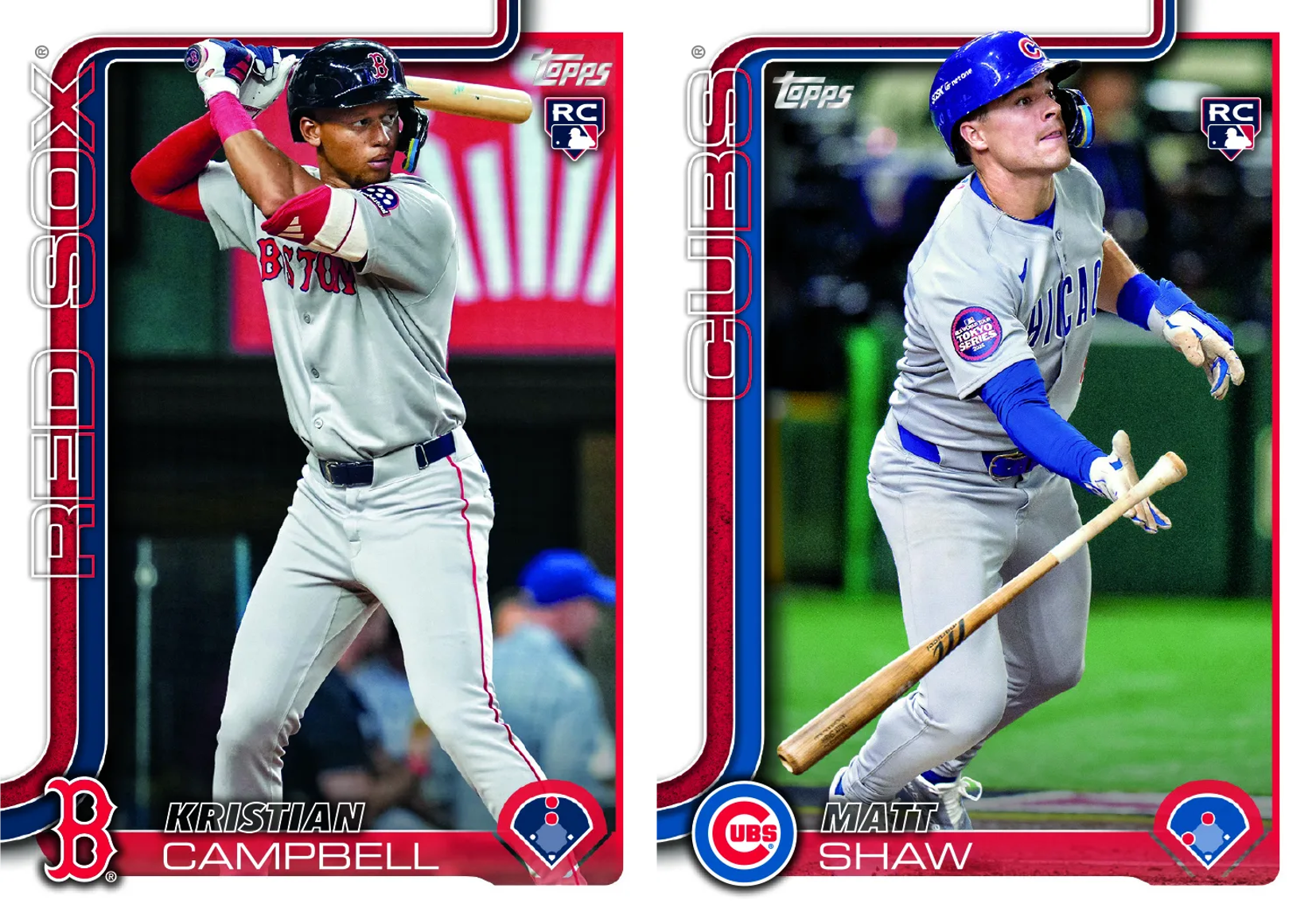

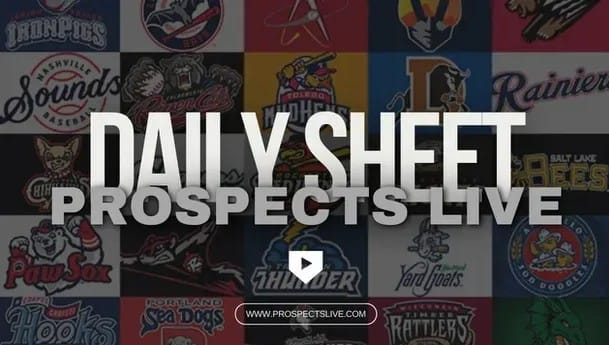
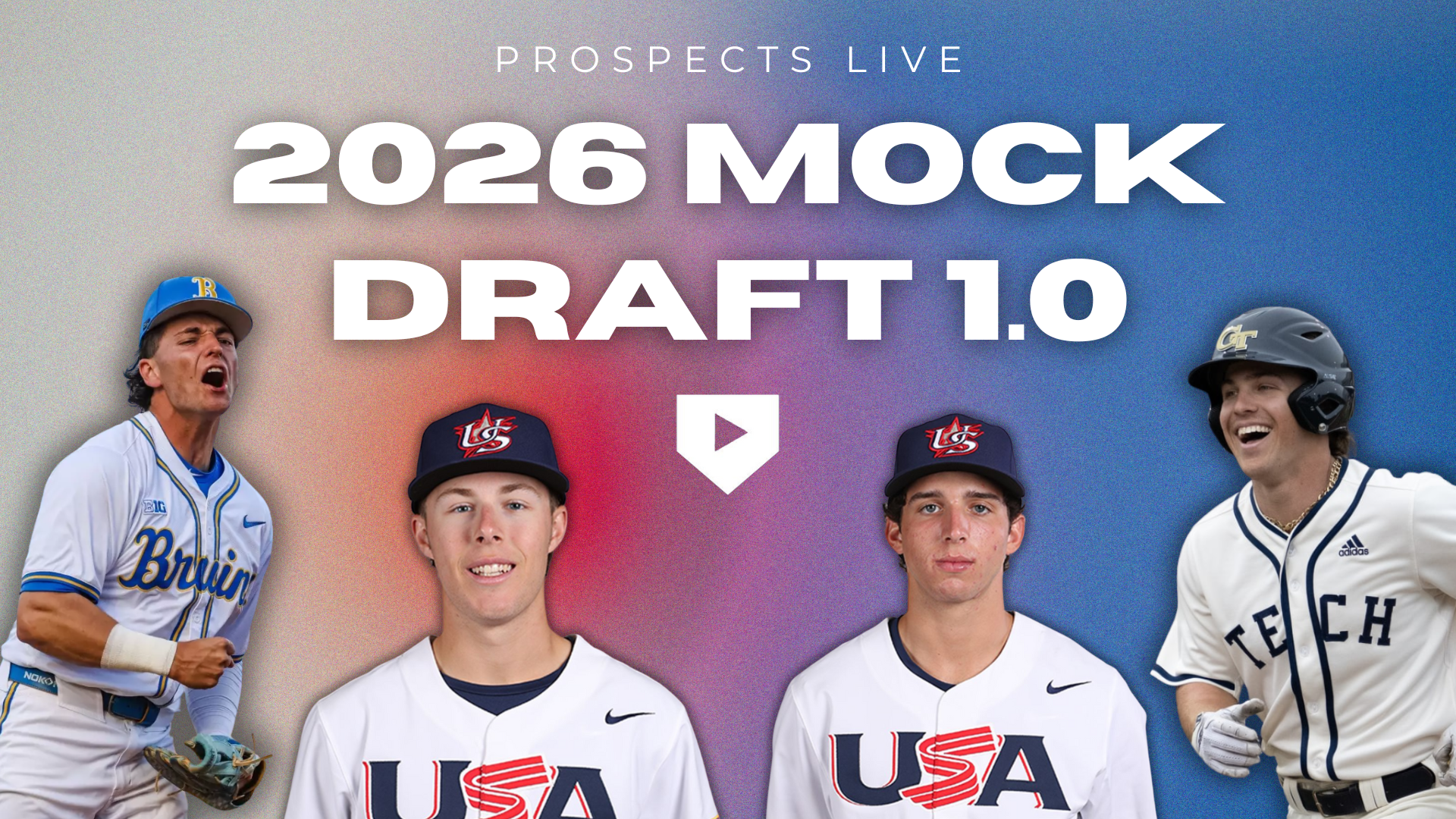
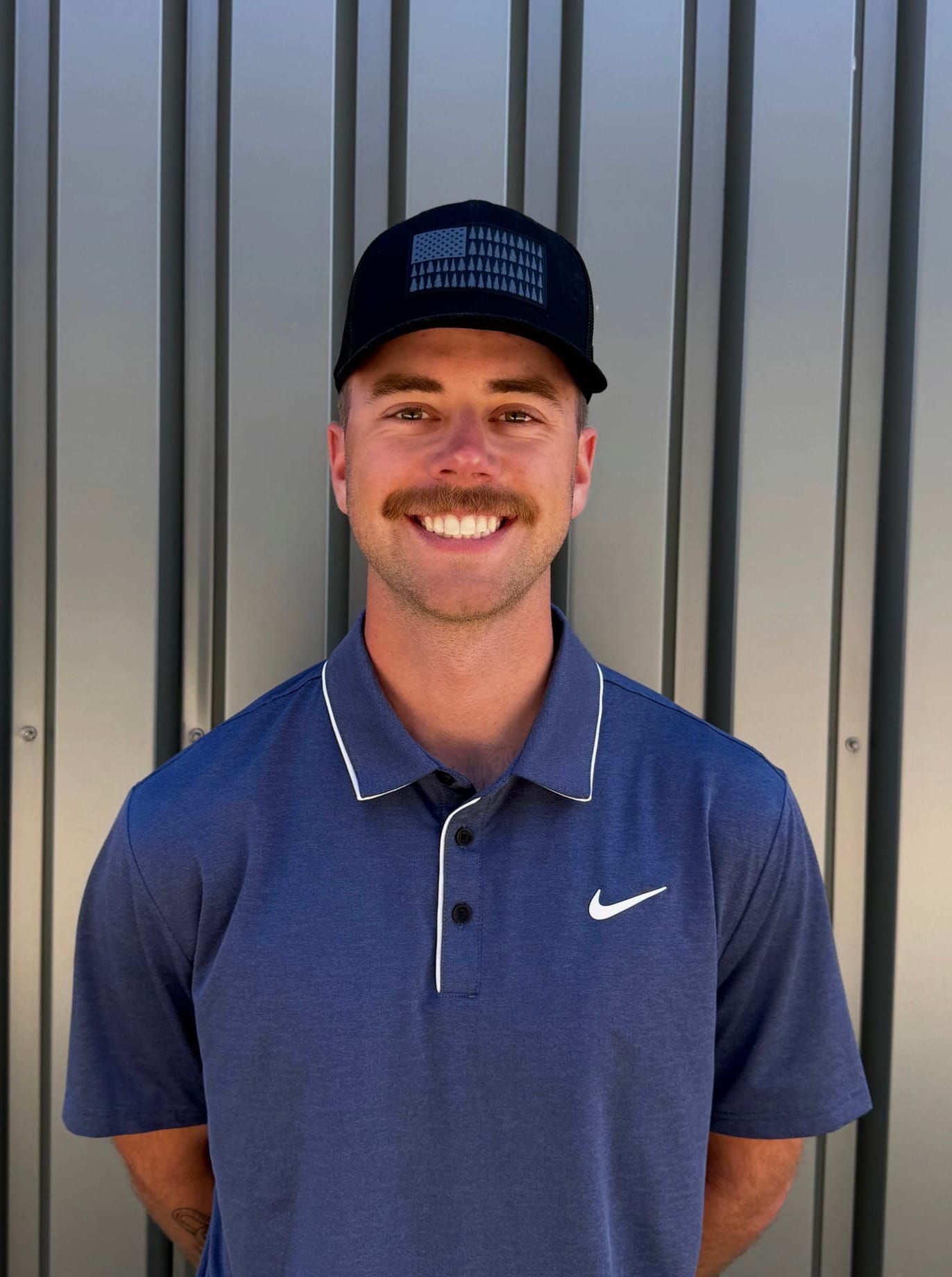

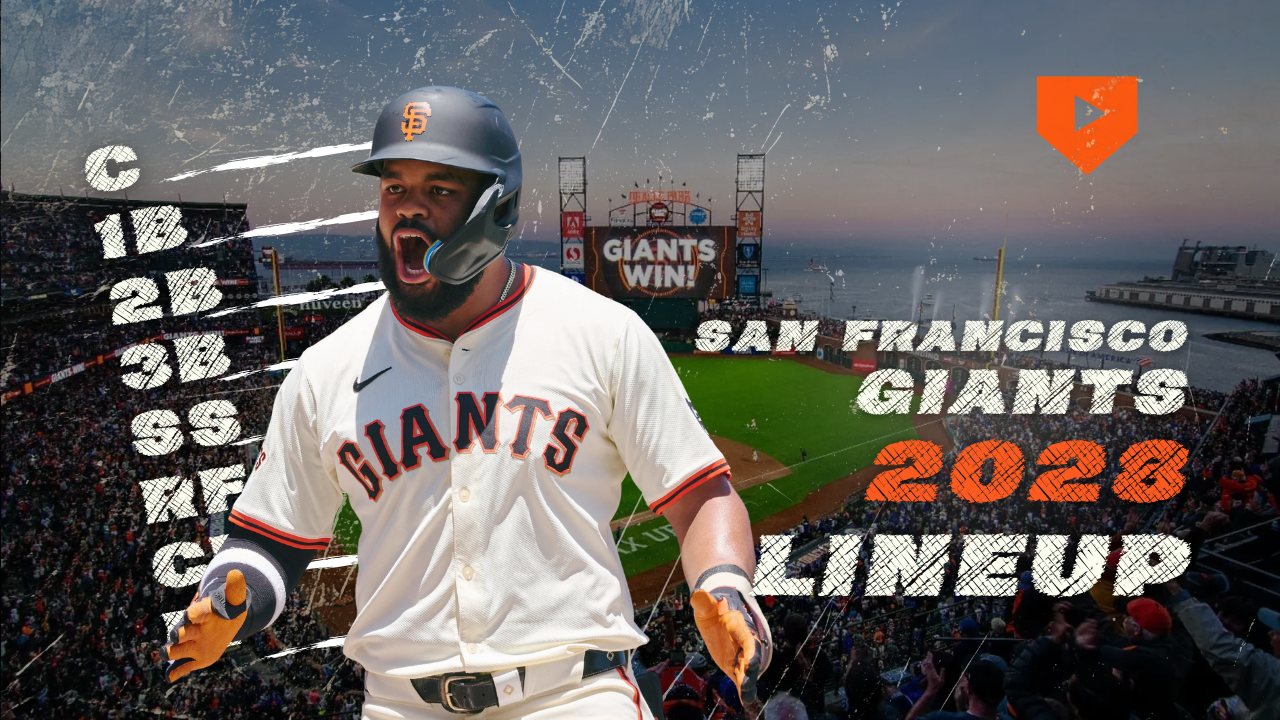
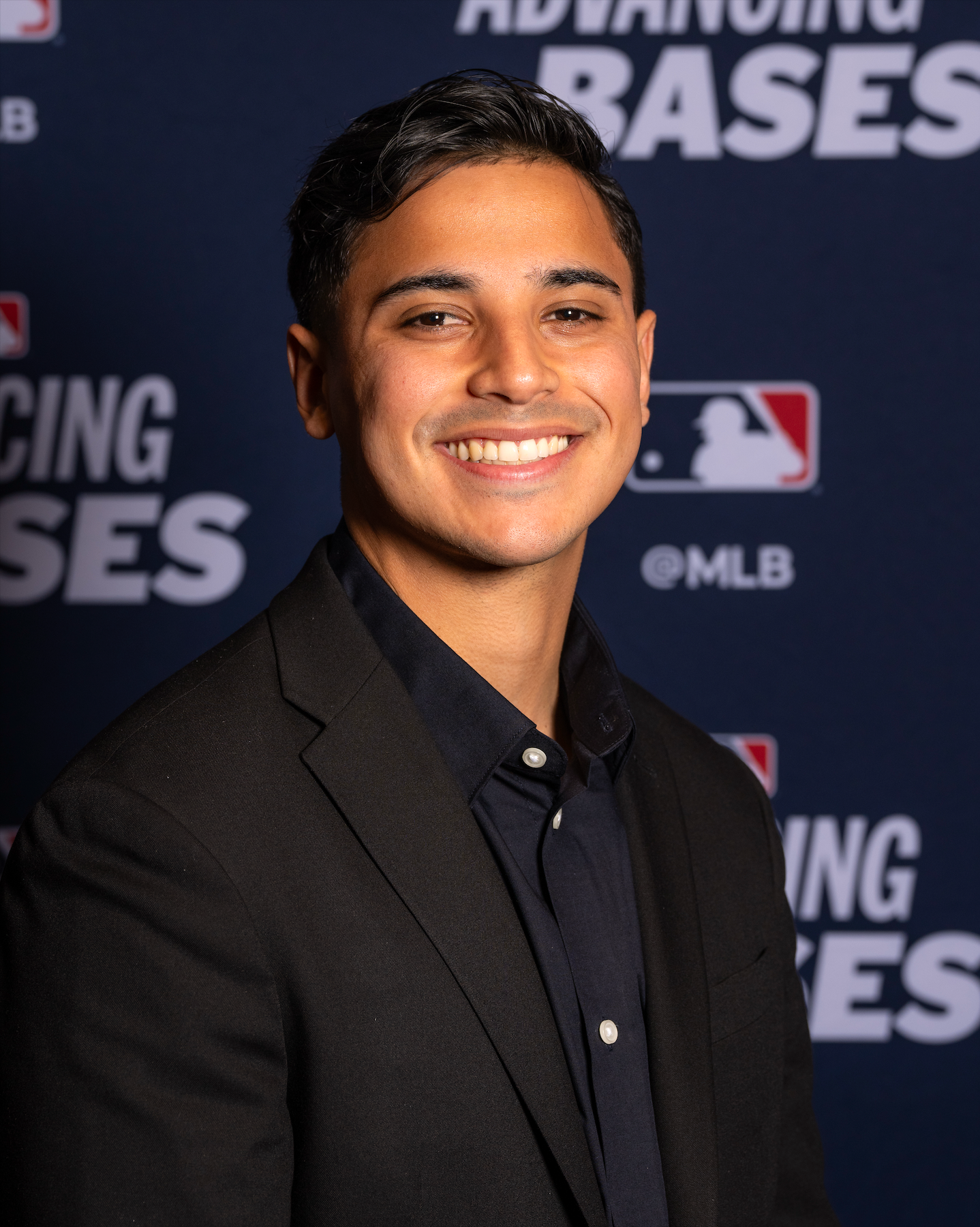
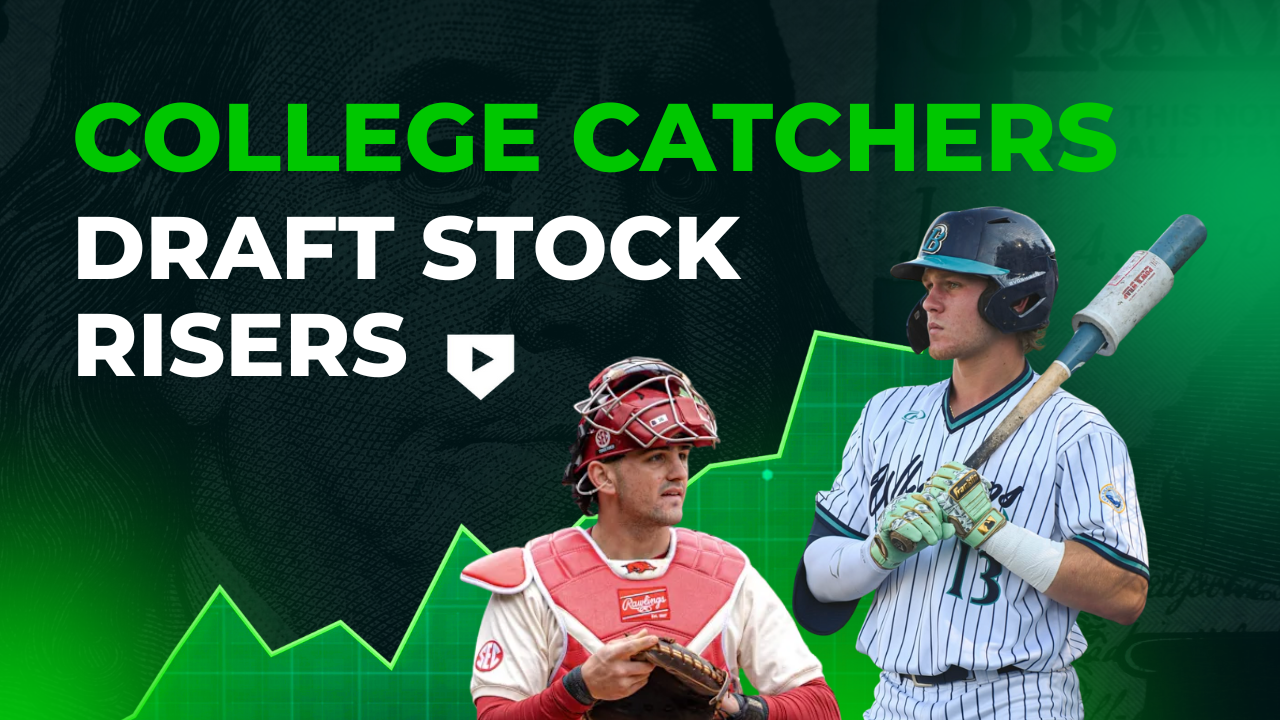
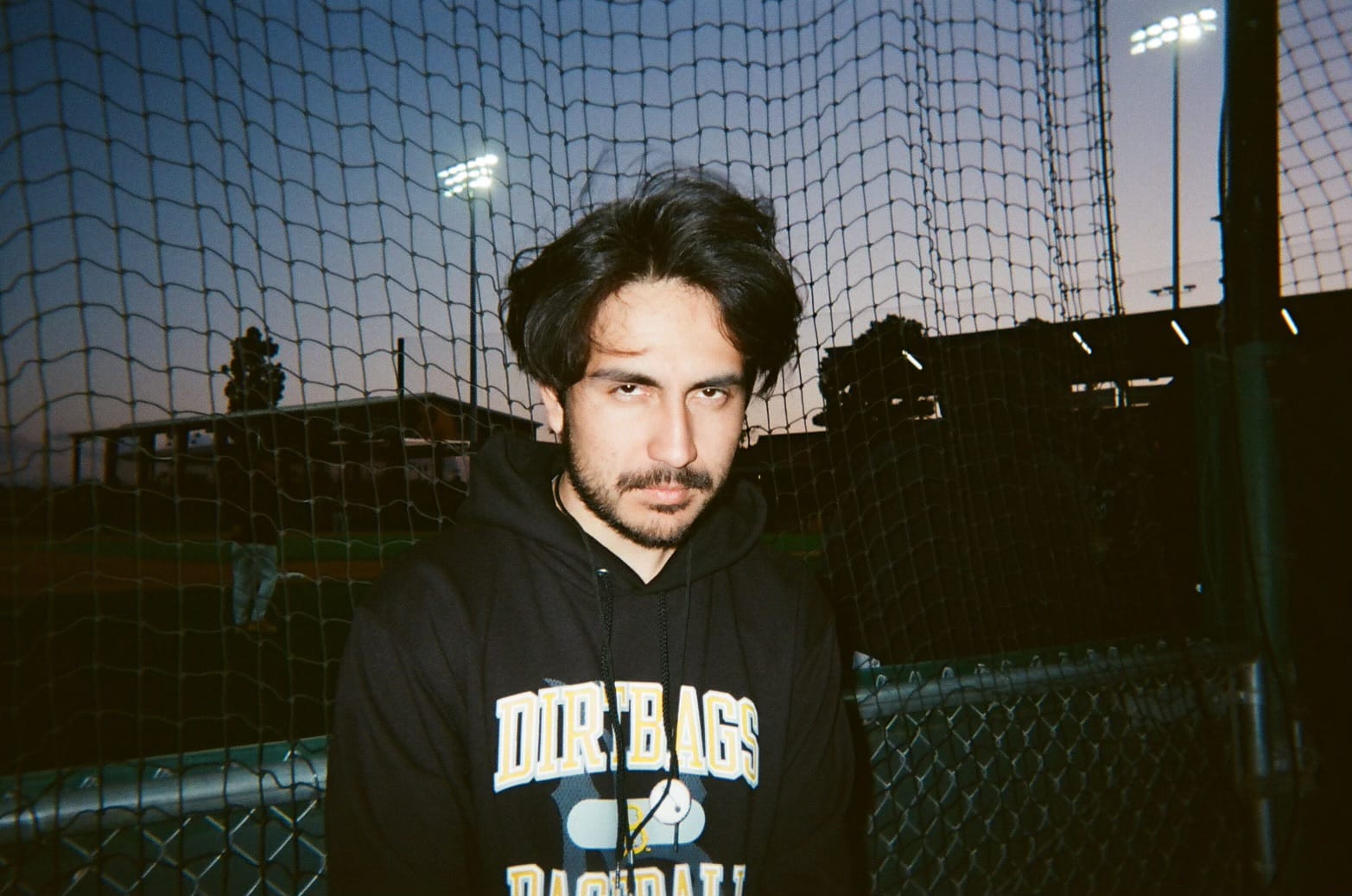
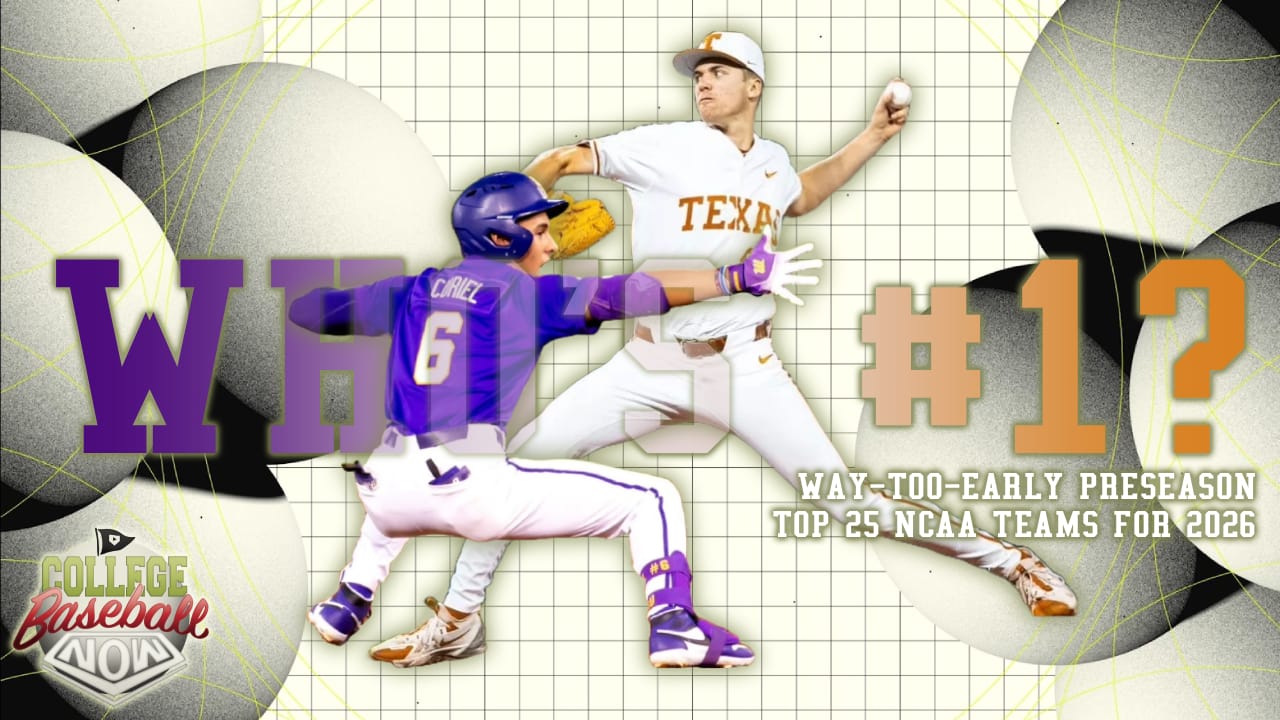
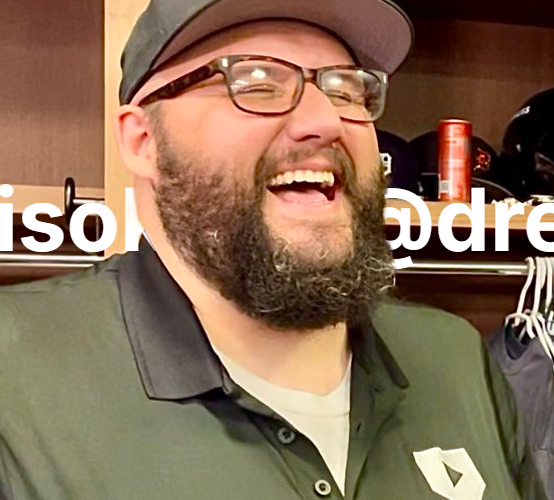
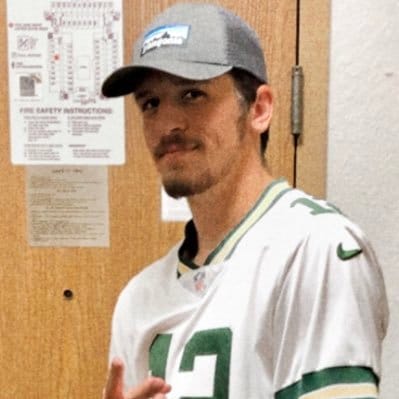

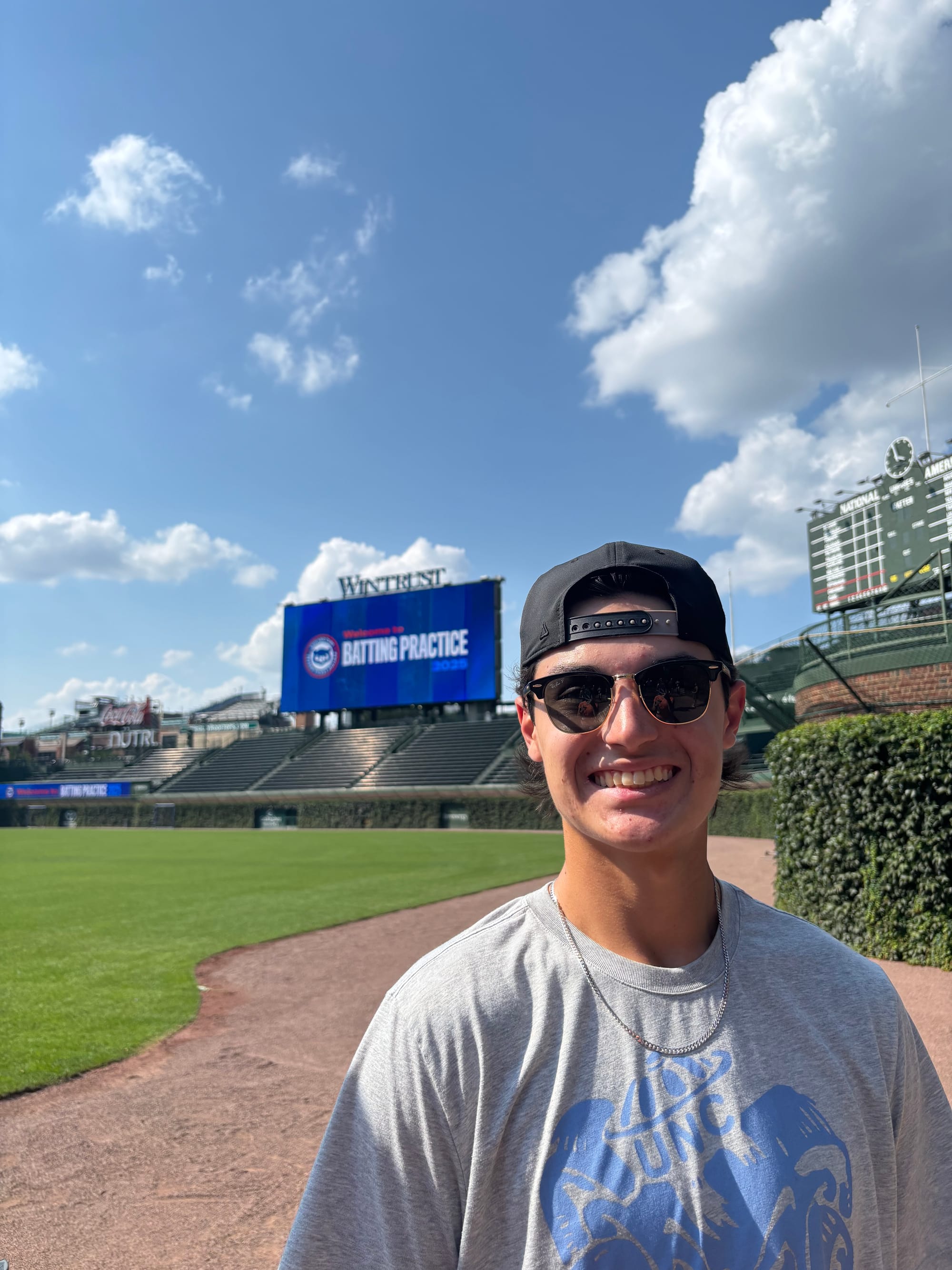
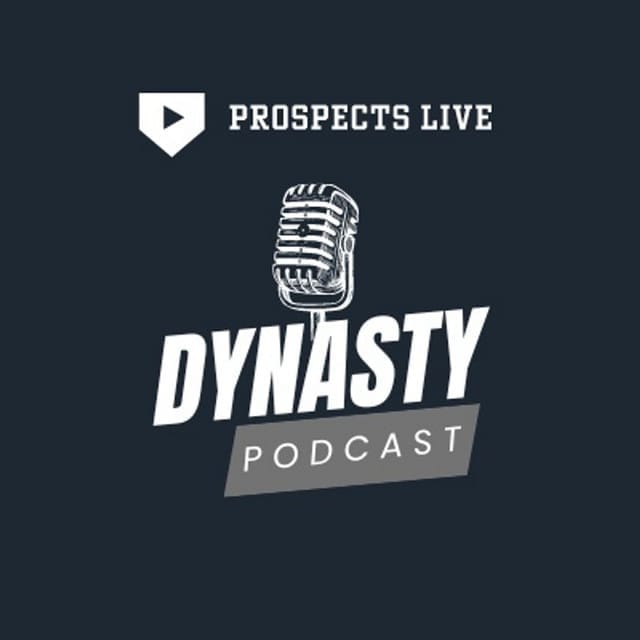

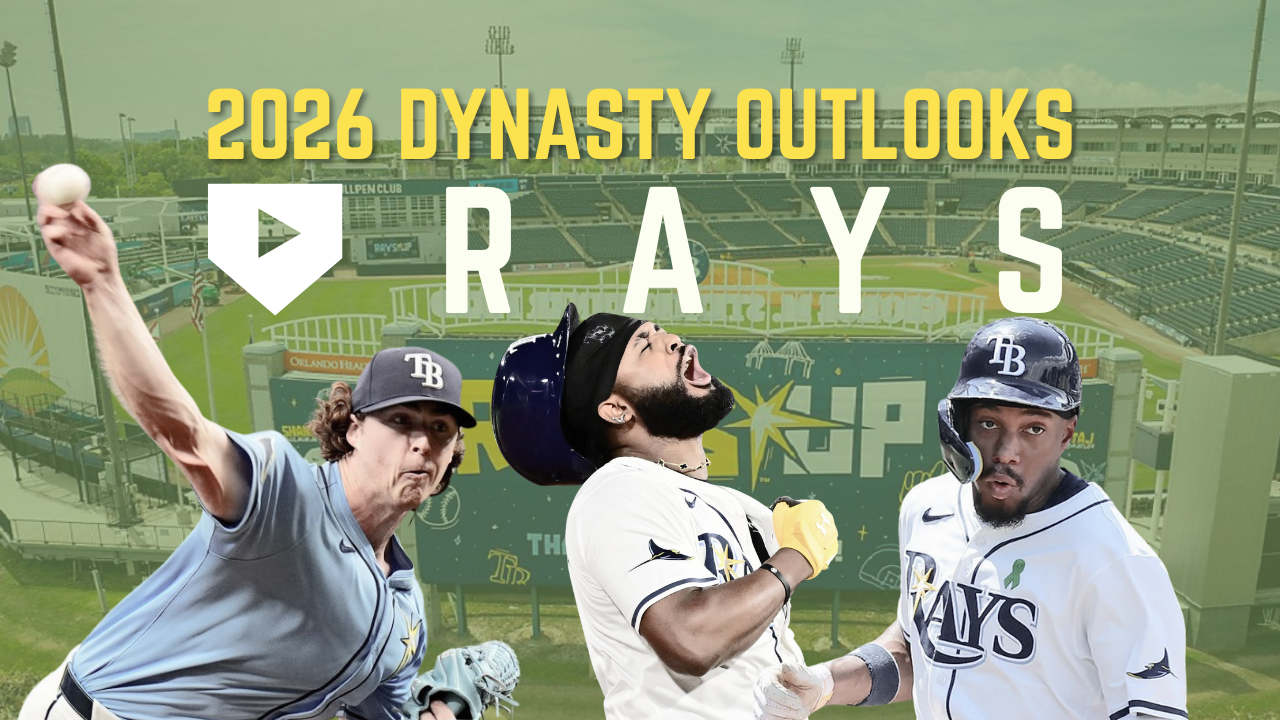
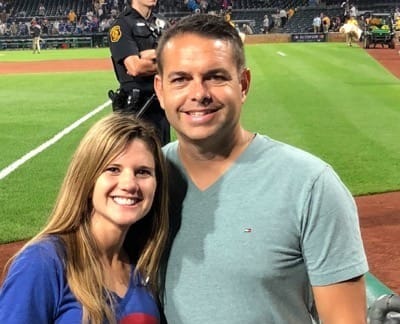

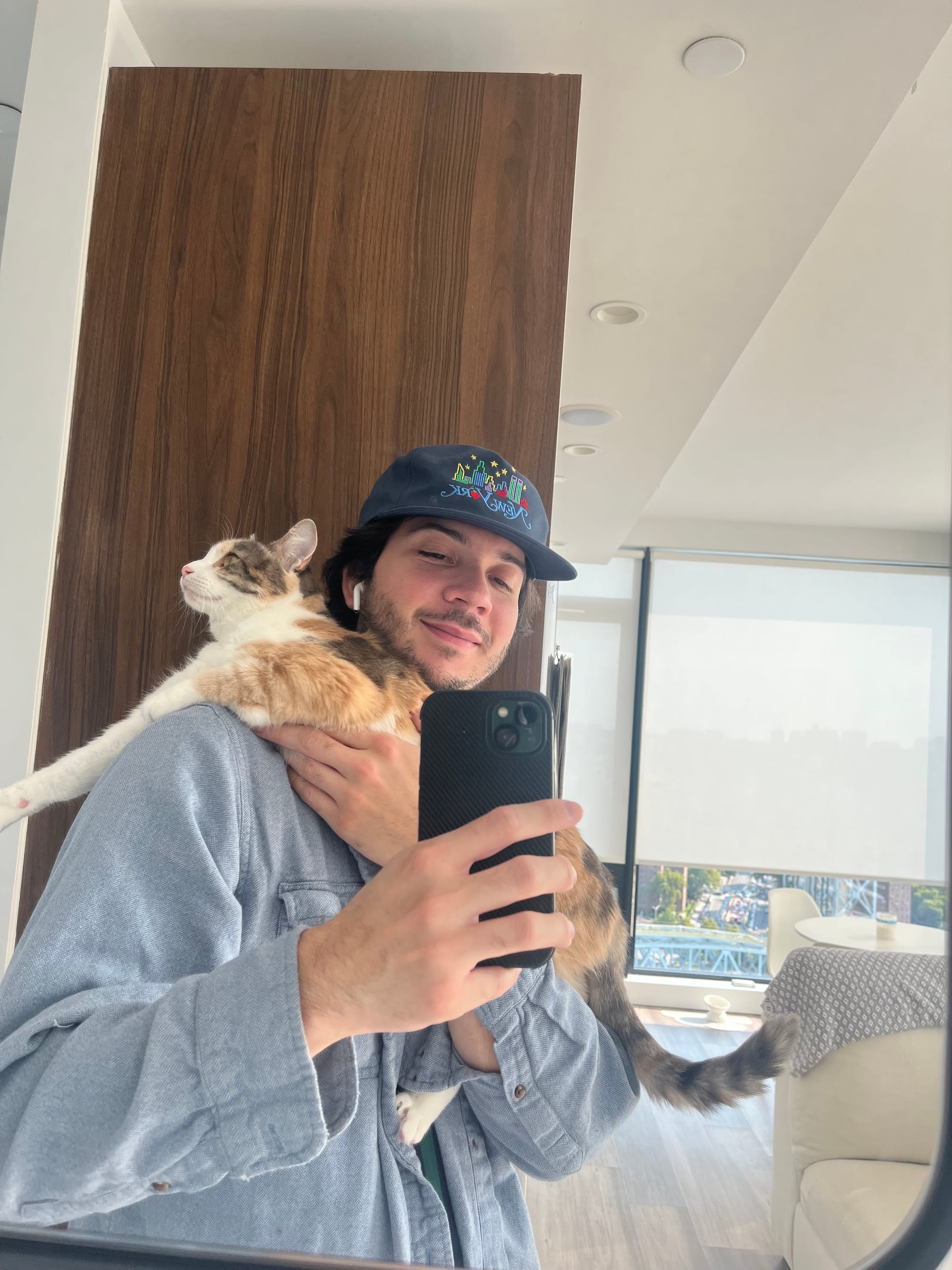
Discussion